My contribution to #FungiFriday by @ewkaw
Despite the cold winter weather, today I had a chance to photograph a number of beautiful fungi in the bosquecito.
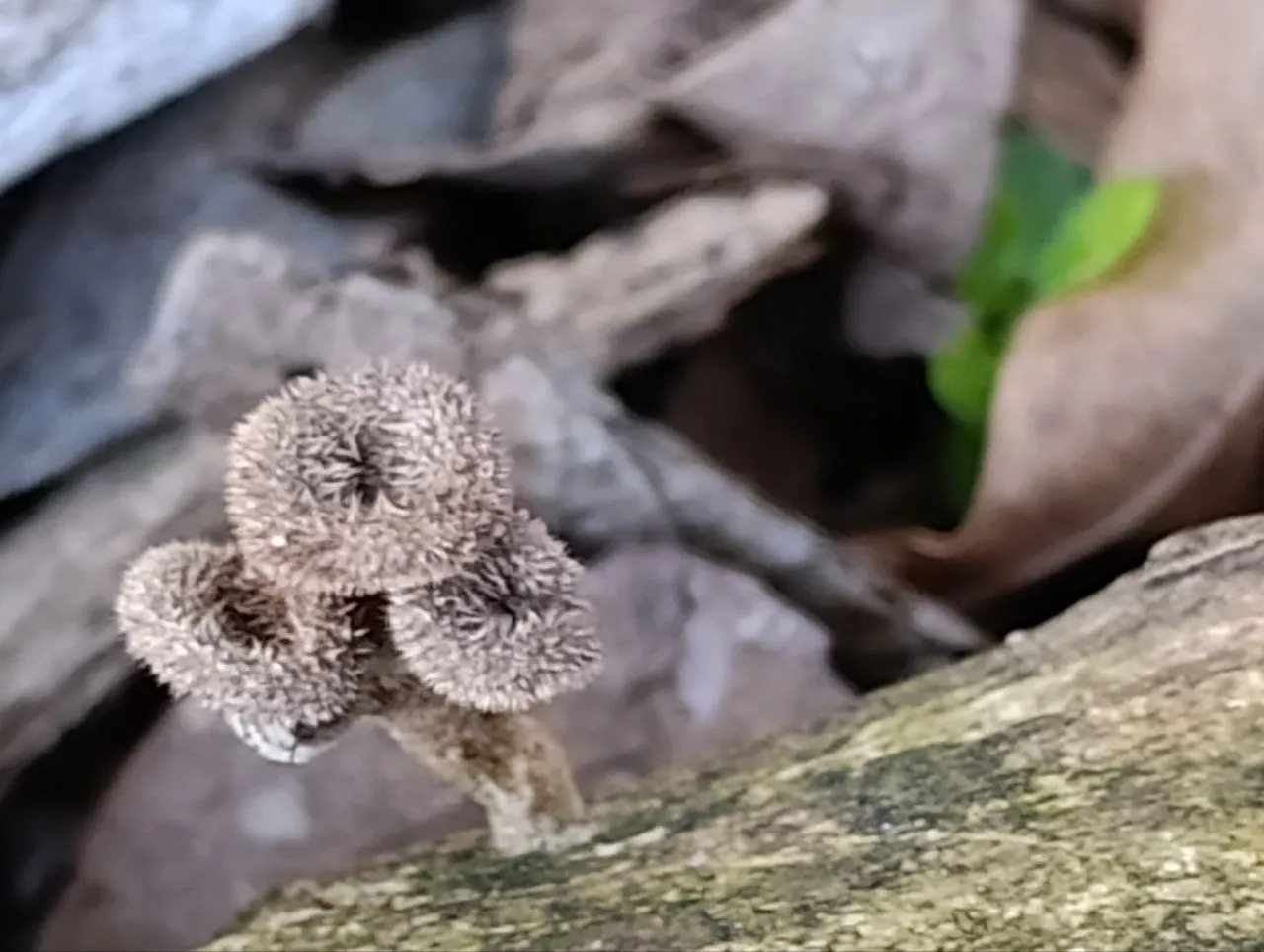
I also saw a huge amount of orchids. Interestingly, many of them seem to have been just sprouting recently in Autumn, tiny.

This all got me thinking of the relationship between fungi and orchids, which I have been intending to write about for you here.
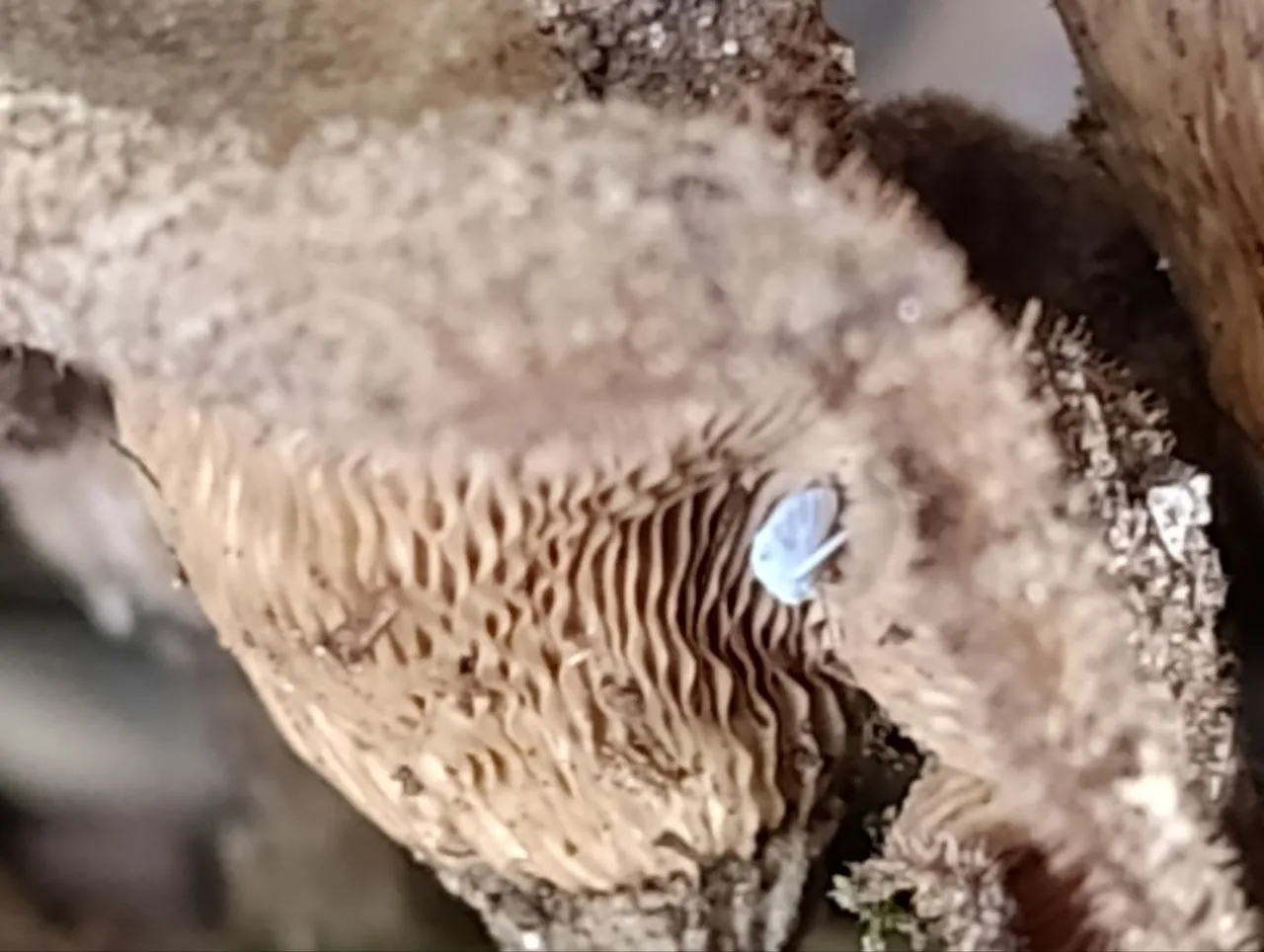
I share with you two things that are fundamental to my spiritual philosophy and view of the world.
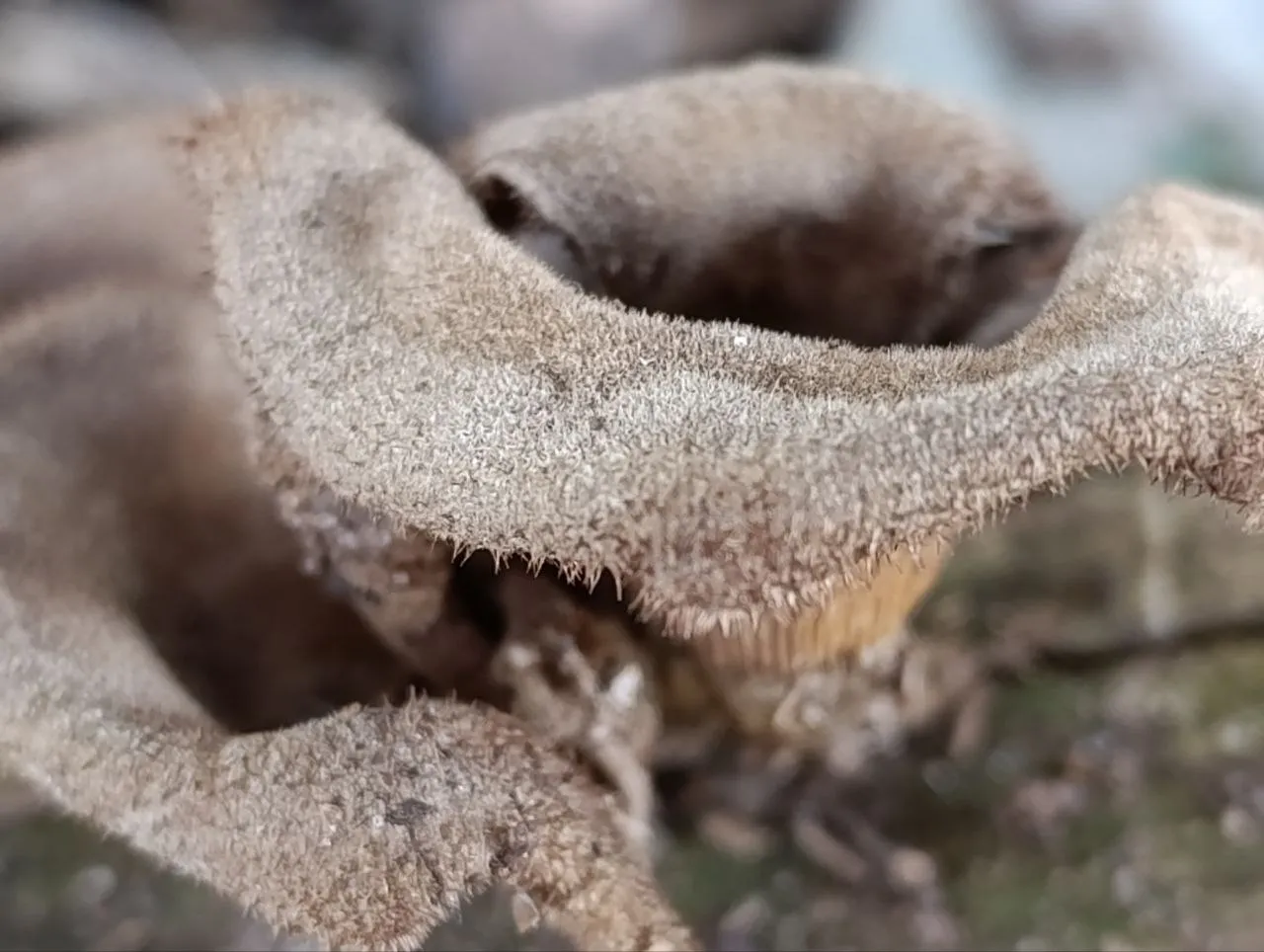
The first is that the placebo effect is the explanation for nearly everything psychospiritual in regard to human beings and potentially many animals as well. Think of how horses respond to energy work. I can tell you first hand...and that will be a separate post one day. Remind me.
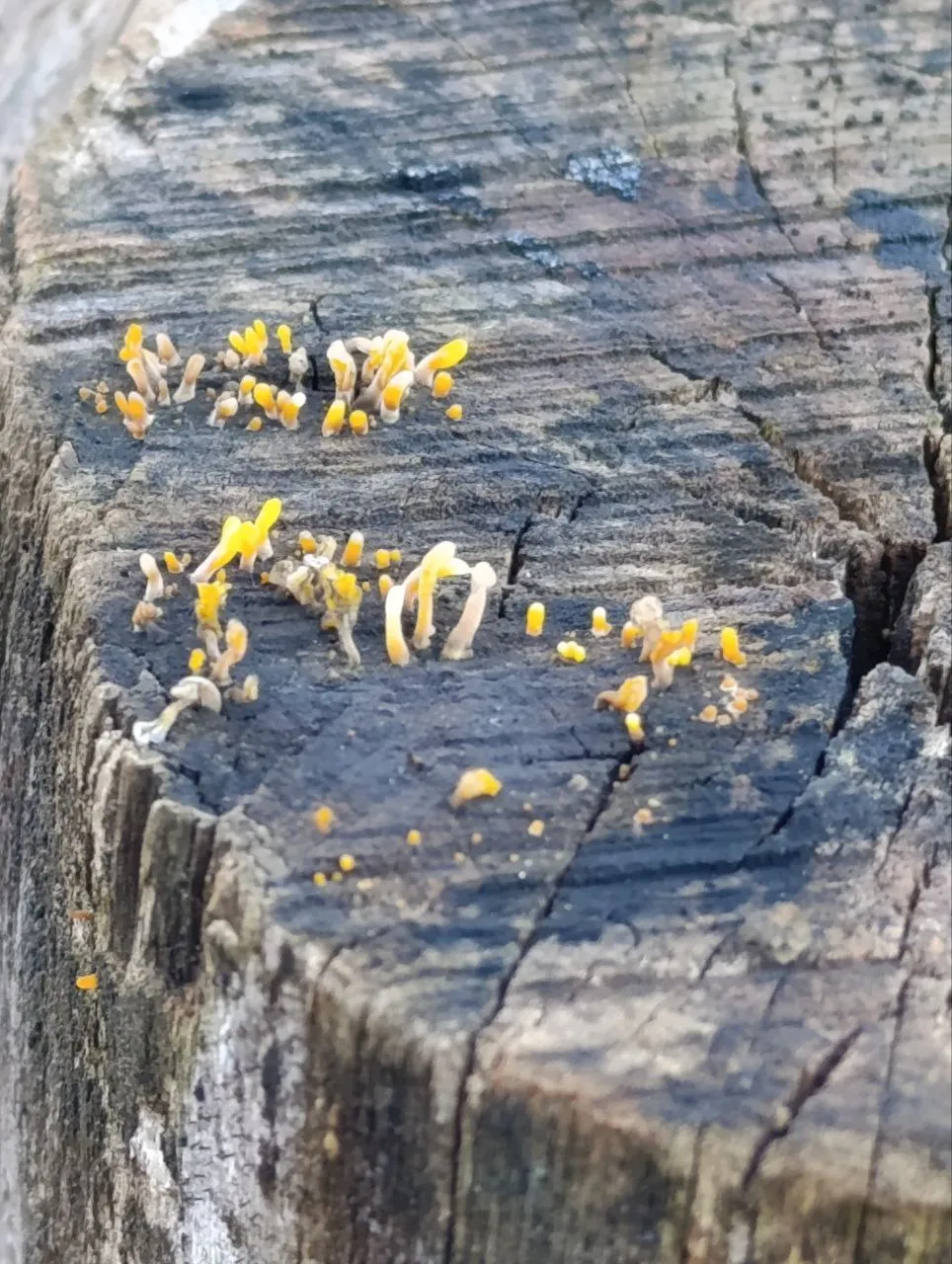
Is it the "placebo effect," or is it "faith" or is it "Love"?
I also checked in on the fence post and the Dacryopinax Spathularia from a previous article. They are also sprouting anew and anew, even in this cold.

Then I will just say, "Survival of the Cooperative." That's the other spiritual precept.
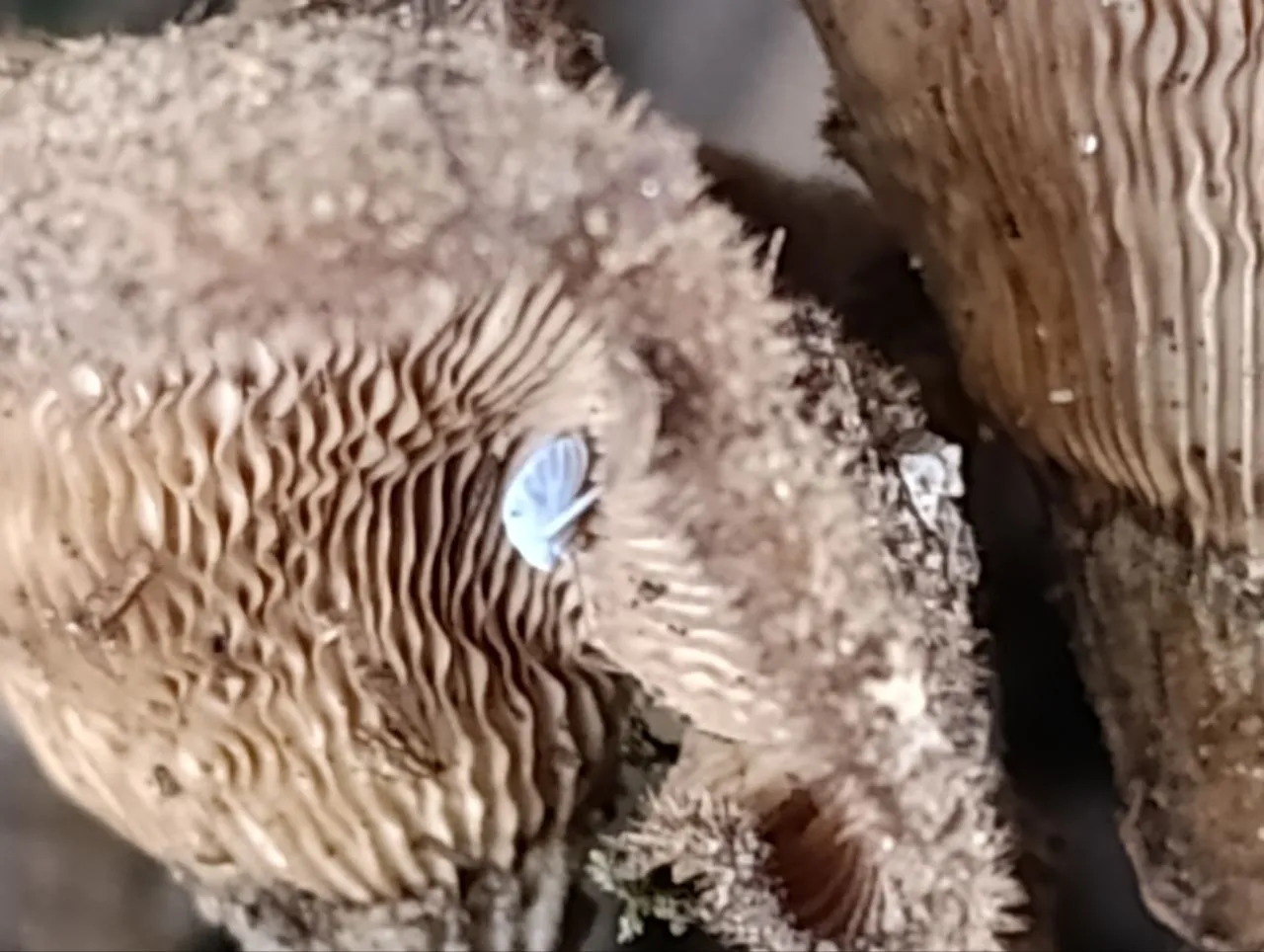
And so Symbioses and the notion of symbiogenesis intrigue me to no end.
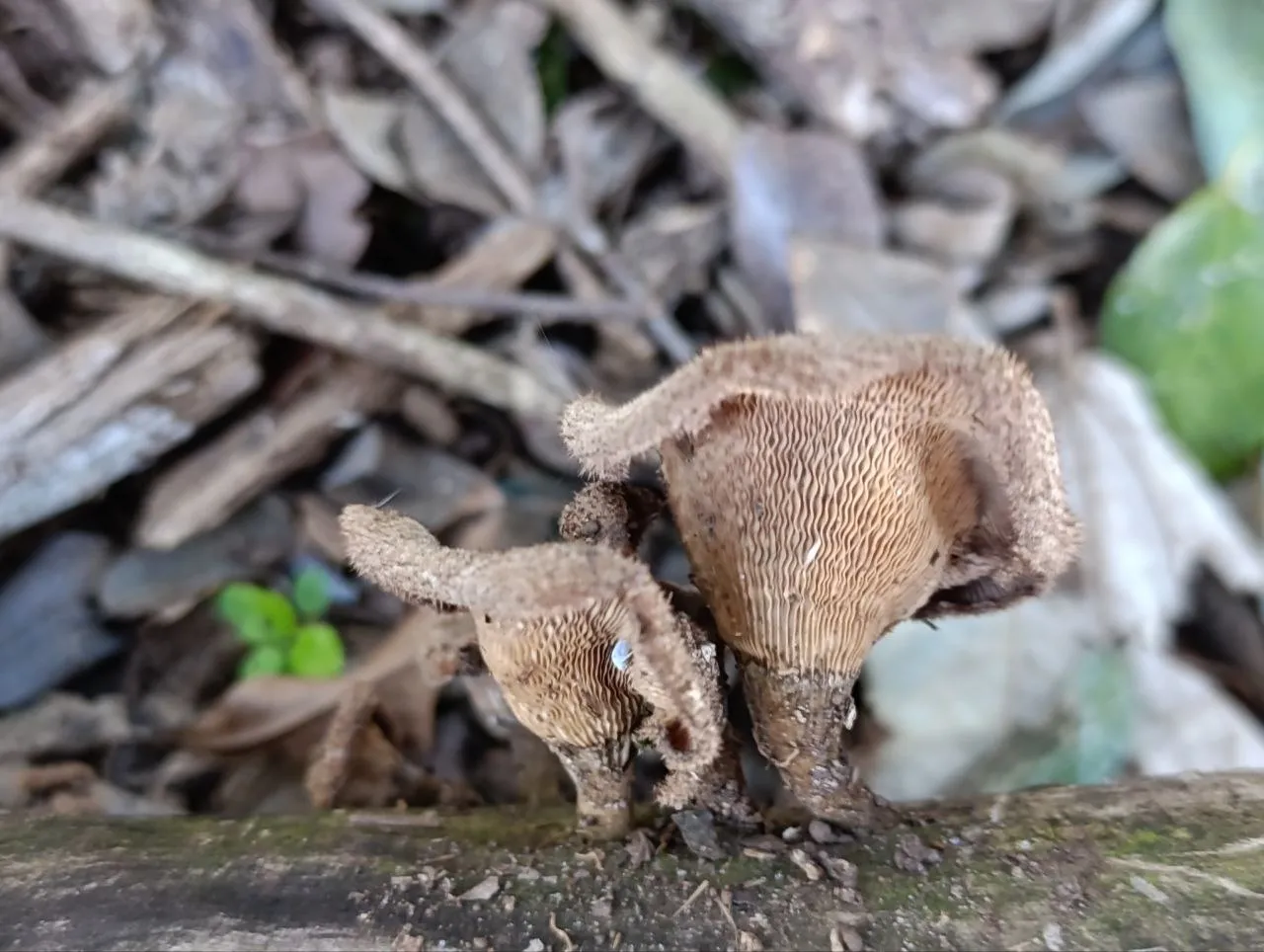
Micorrhyzal fungi who live within plant roots receive carbon, sugars, carbohydrates from the plant. In return the fungi help the plants to access water and nutrients from the soil. They generally exhibit a clear and simple symbiotic relationship.
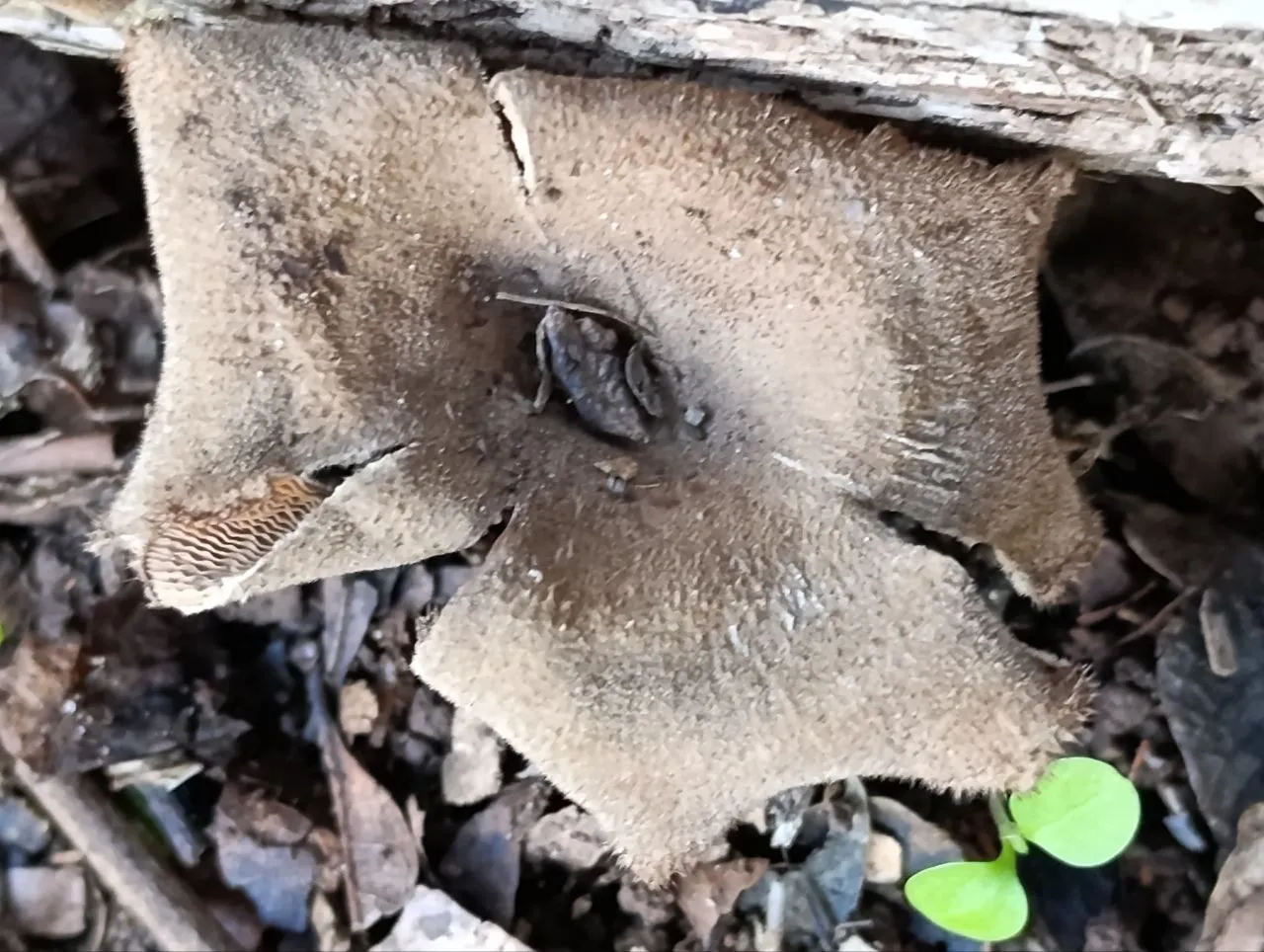
Grok this! Many of the fungi who live in pelotons often seen as tight coils of fungi, within the rhizosphere (root world) of the protocorms (rooty ball-things) of orchids provide nitrogen, carbon and other essential nutrients to the plant, and seemingly get nothing in return.
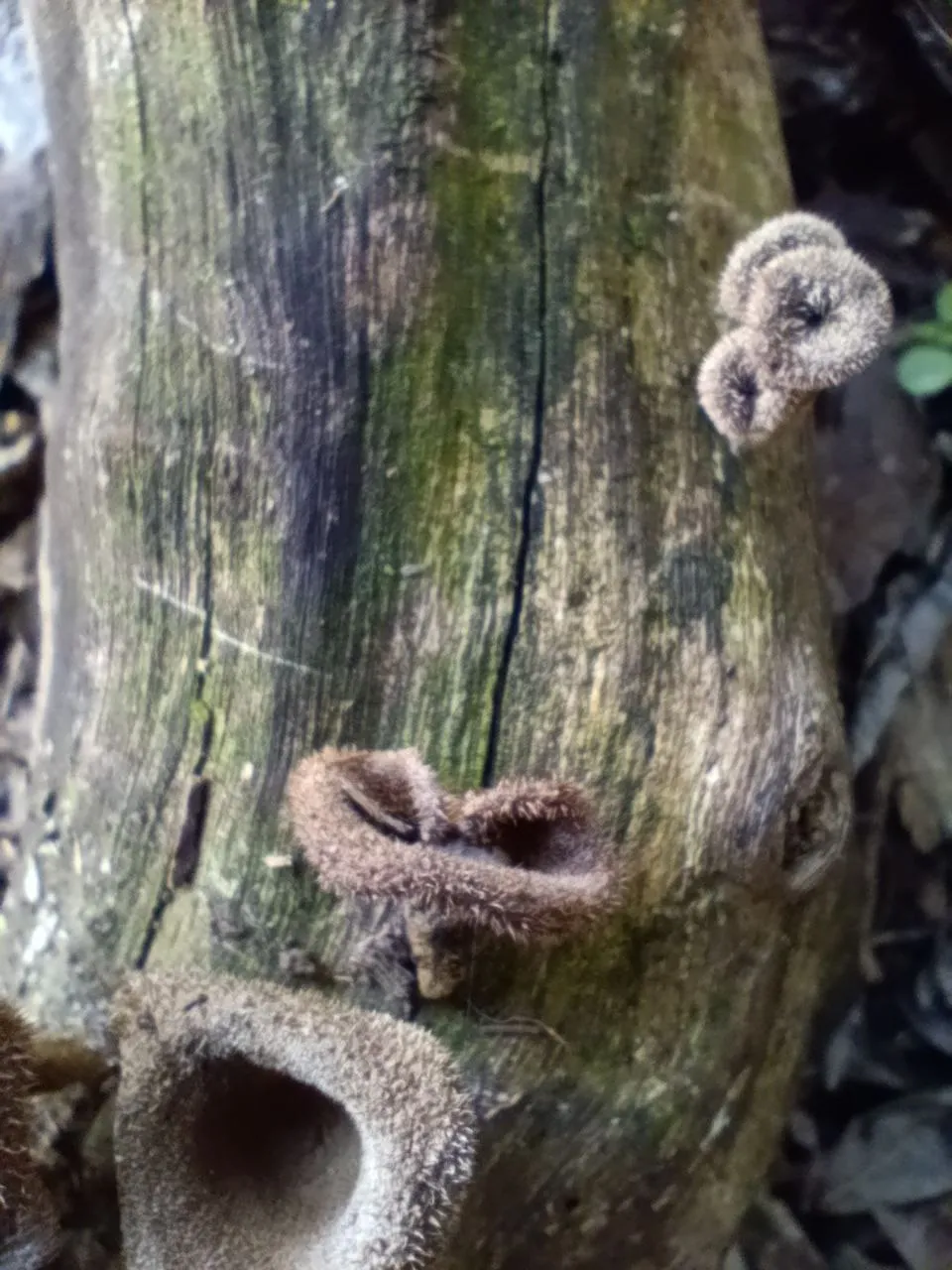
Most orchid seeds are extremely tiny and lacking an endosperm of stored nutrients and therefore can not even germinate without the help of fungi to nourish them.
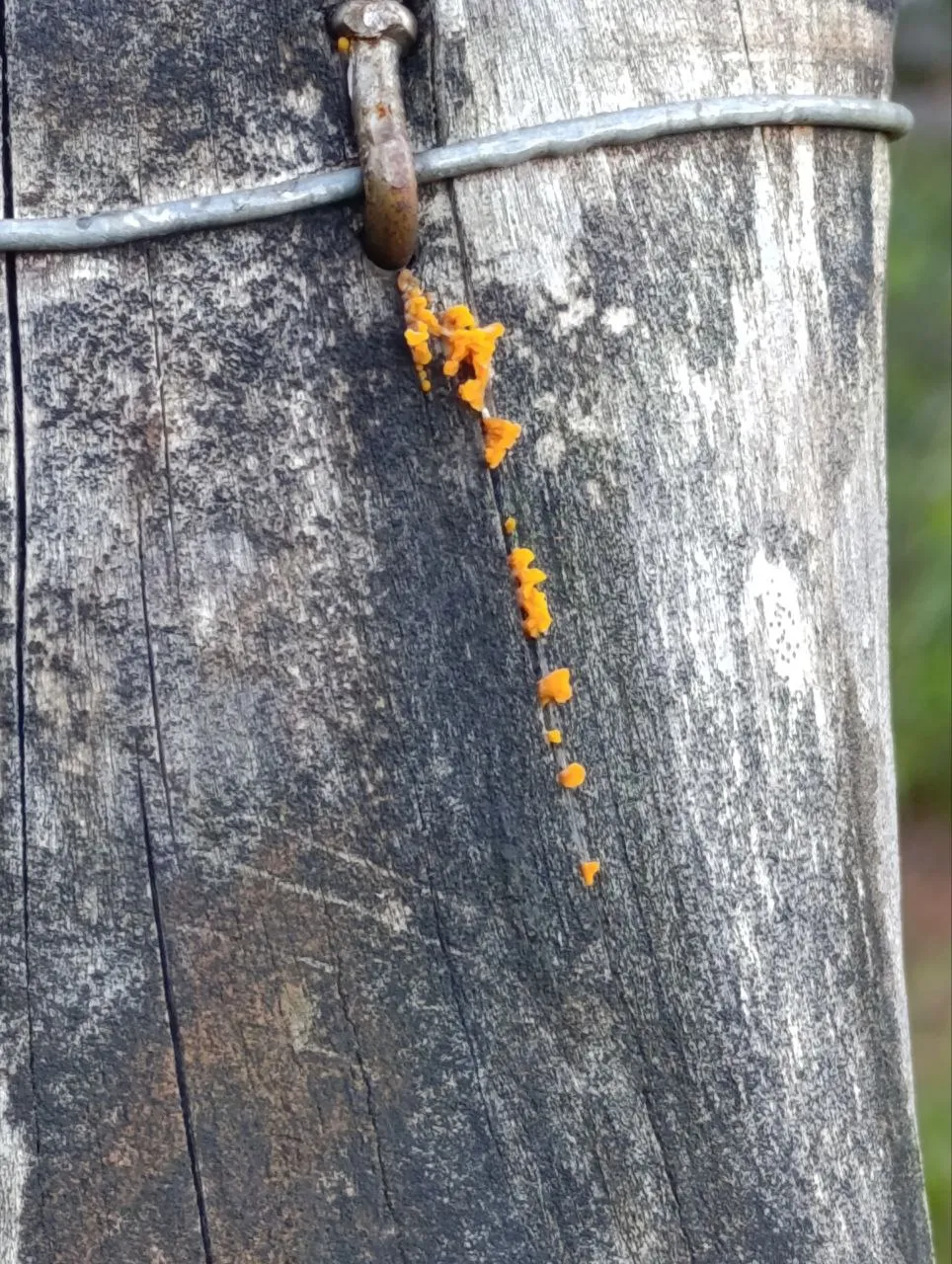
While many orchids will eventually sprout leaves and become photosynthetic, others who are mycoheterotrophic, have a lifelong dependency on their fungal partner, never growing leaves.
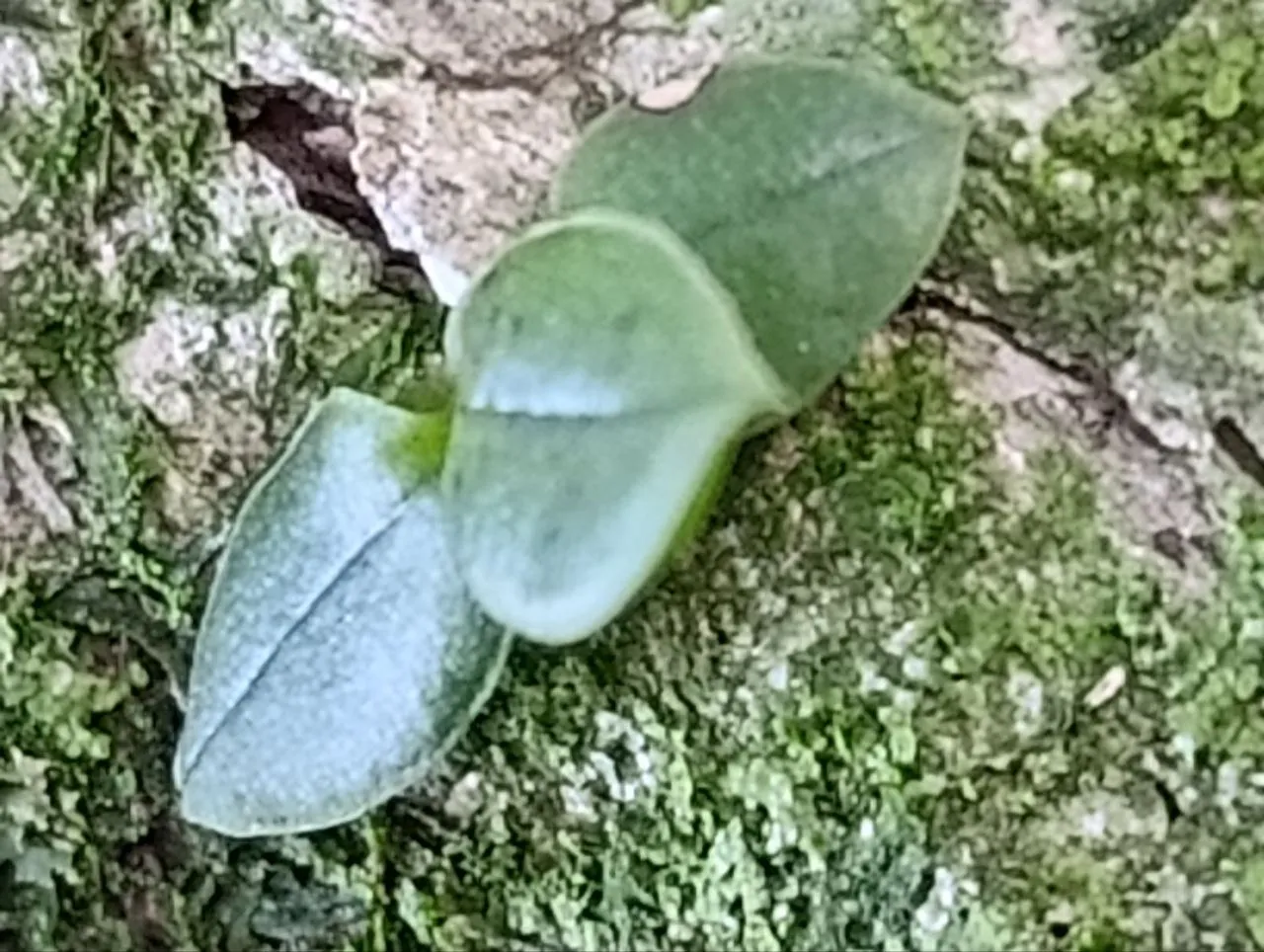
Often only one specific fungi can relate in this way with one specific type of orchid.
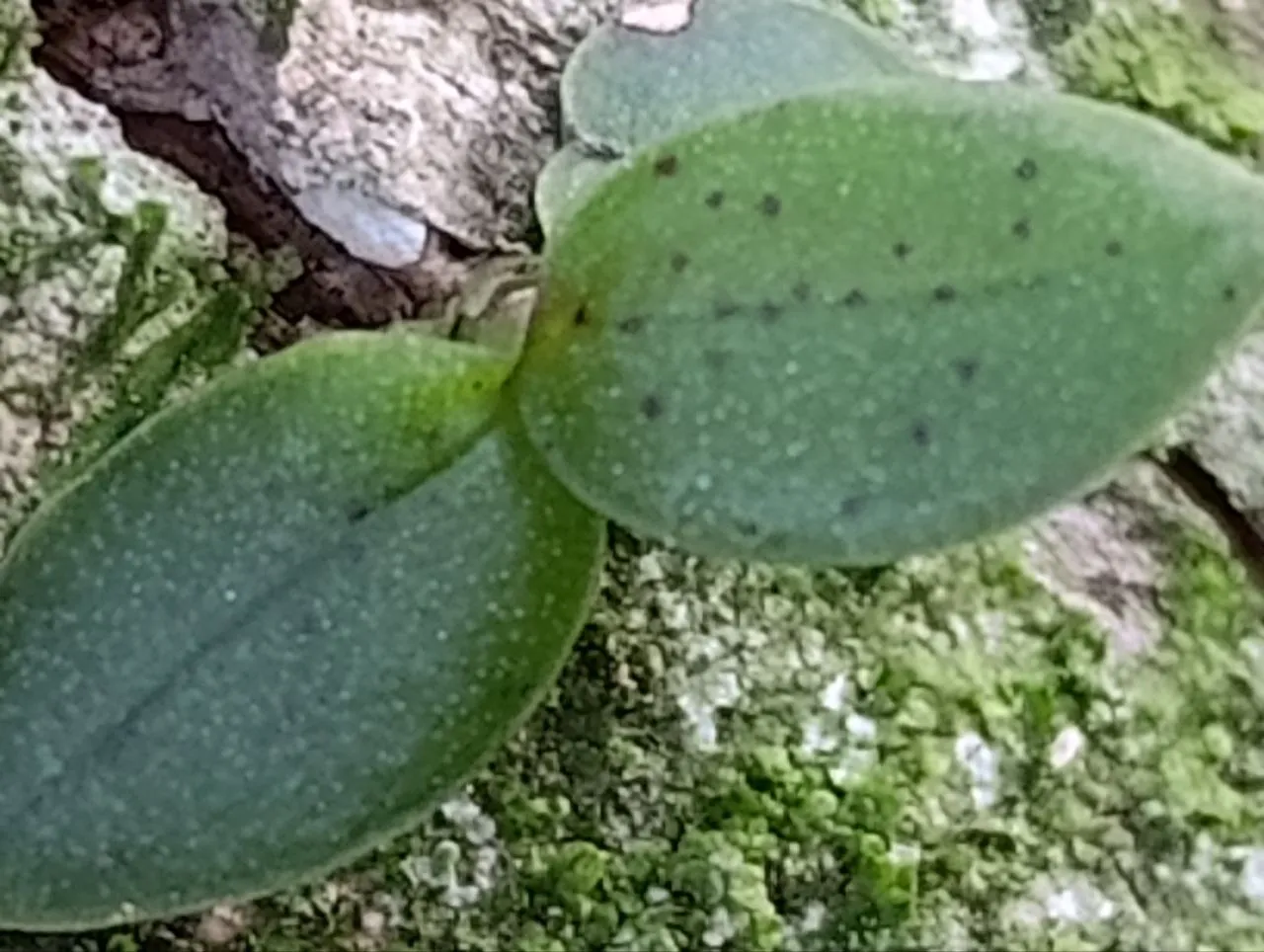
Many of the types of fungi getting down with orchids are • Basidiomycetes (they have club-shaped spore factories). A few are species from the genera Sebacina, Ceratobasidium such as Rhizoctonia, and Tulasnella.
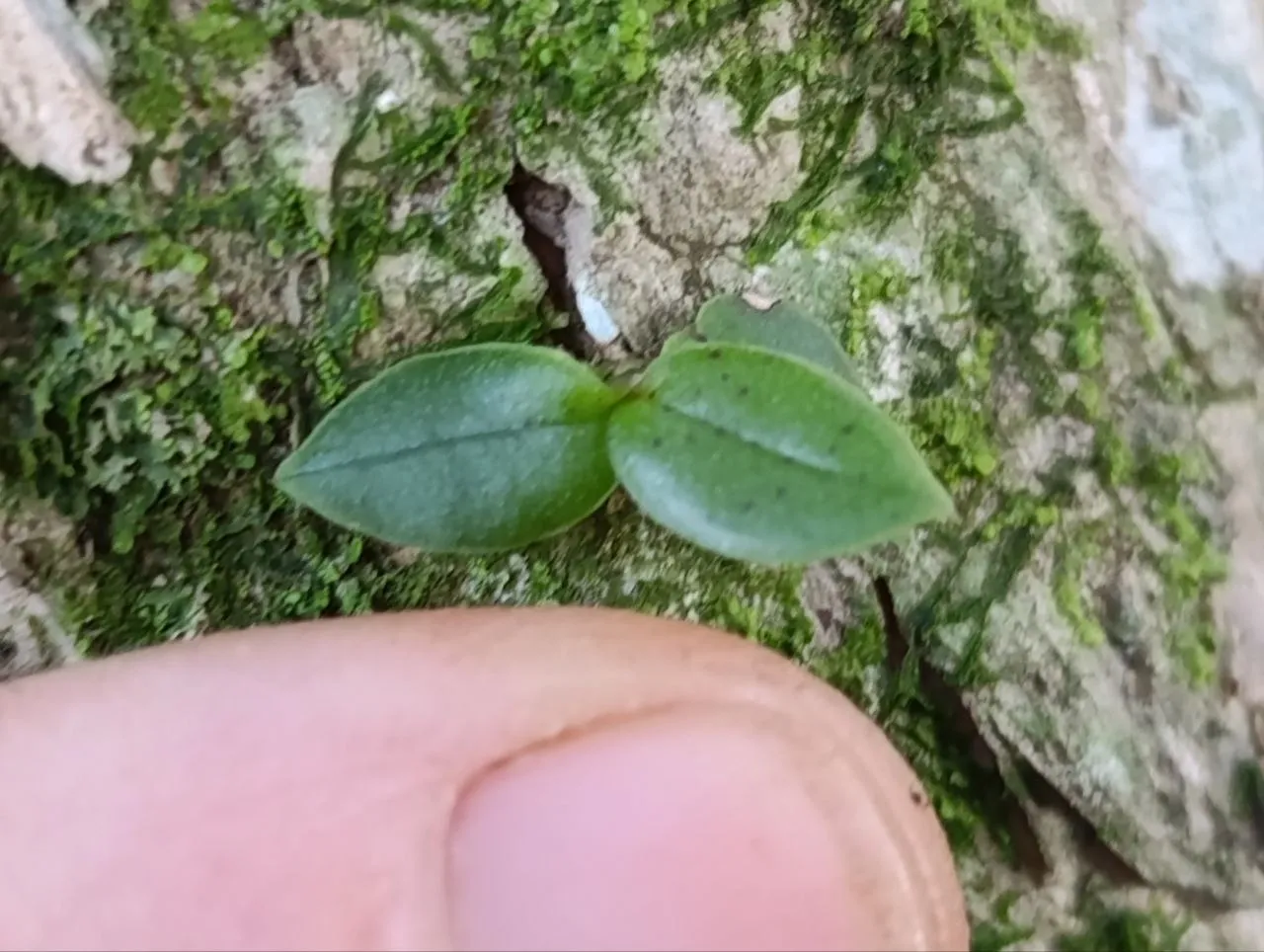
Orchids are really wonderful as bioindicators of the health of an ecosystem, not only because of their relationship with specific fungi. They illustrate how no species, no family, no genera of course no idividual is a monolith, because even though lab scientists have been able to successfully germinate orchid seeds provided with their with fungi in petri-dishes, the majority of terrestrial orchids simply will not even be able to reach maturity in those lab provided media, nor even when provided with soil that is sterile.
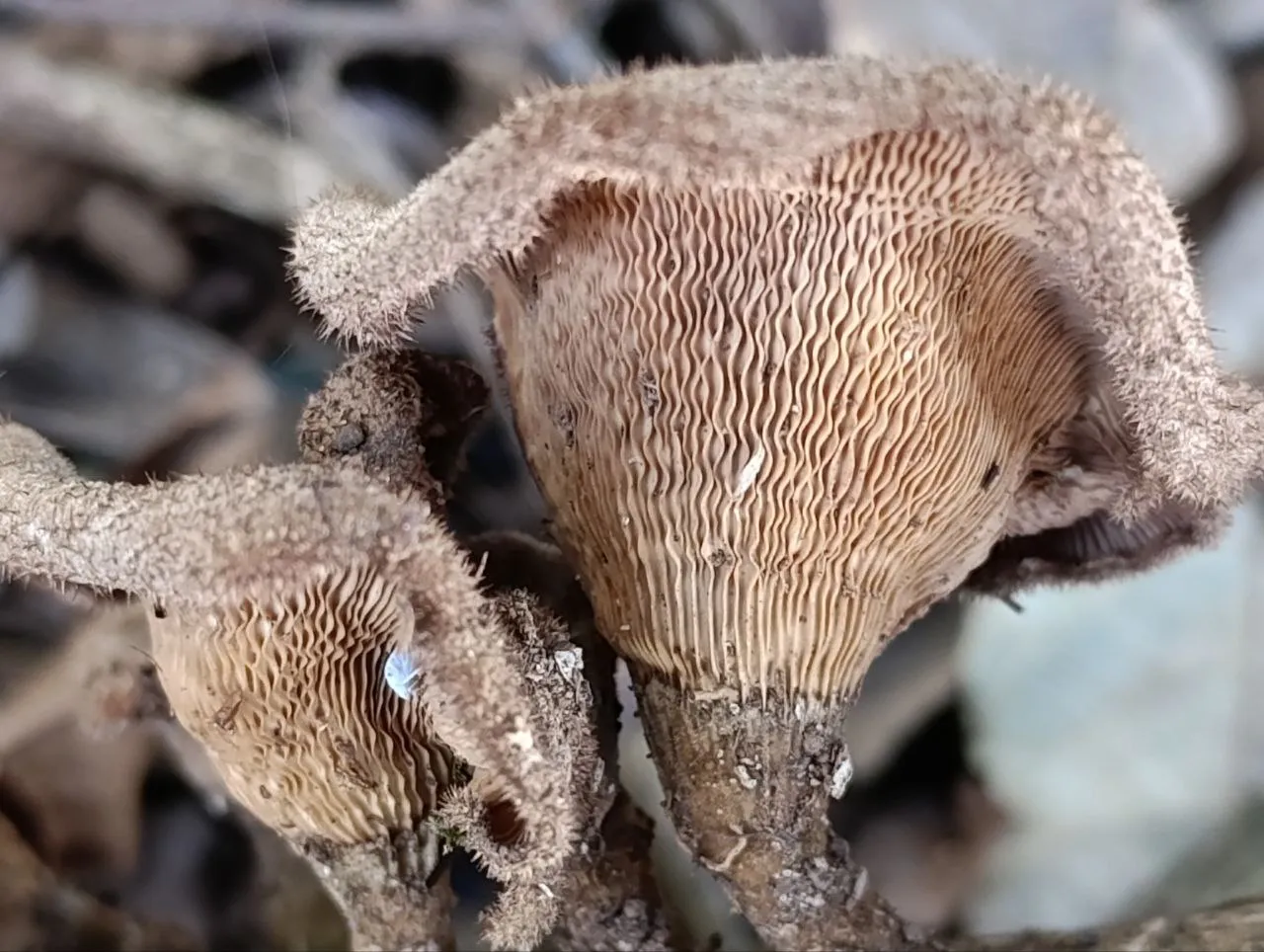
Okay, so a third spirtual, philosophical, scientific blip from my brain: Our human gut microbiota is not simply related to soil health.
The soil microbiota IS our gut microbiota and our gut microbiota IS the soil microbiota. I AM DIRT. and so are you.
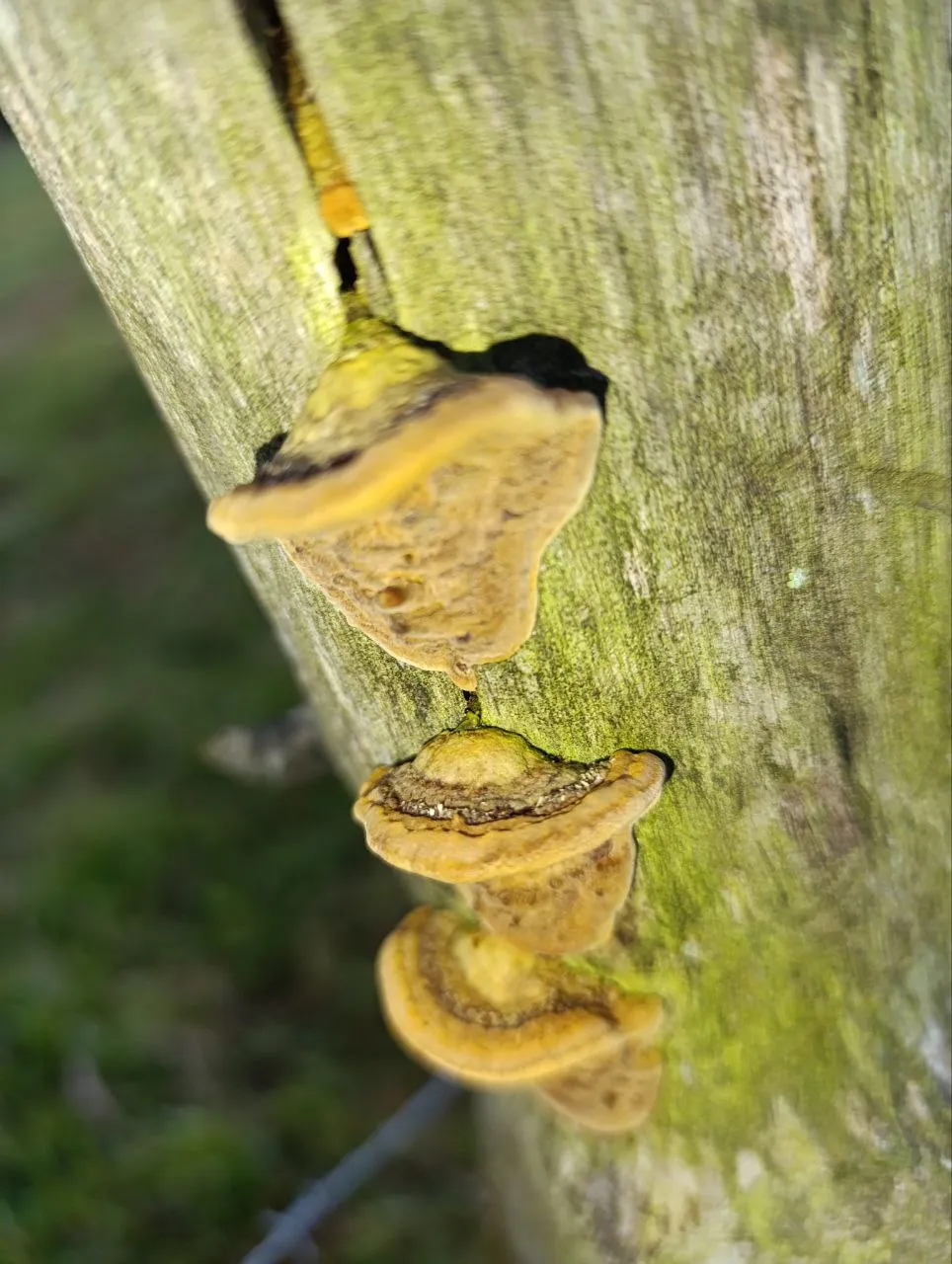
Although they are apparetnly quite particular in their tastes, a few types of fungi are known to germinate several species of orchids; Tulasnella calospora, nicknamed the “Super Fungus,”will germinate many different species of orchids.
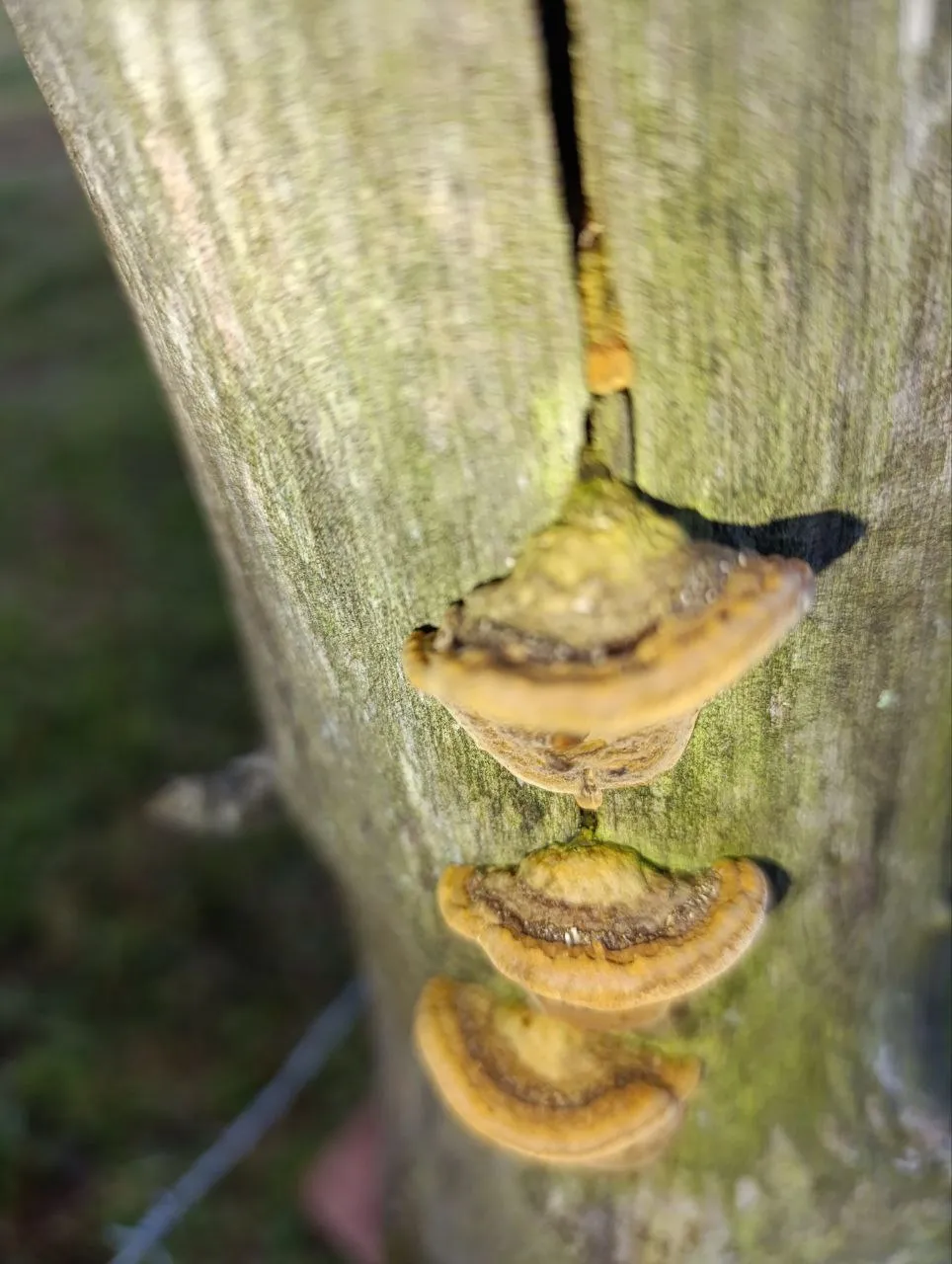
Then there are the orchids who require different species of fungi during their various life stages... one species for sprouting, a different one while living underground embryonic, and another fungi entirely to continue as a mature plant.
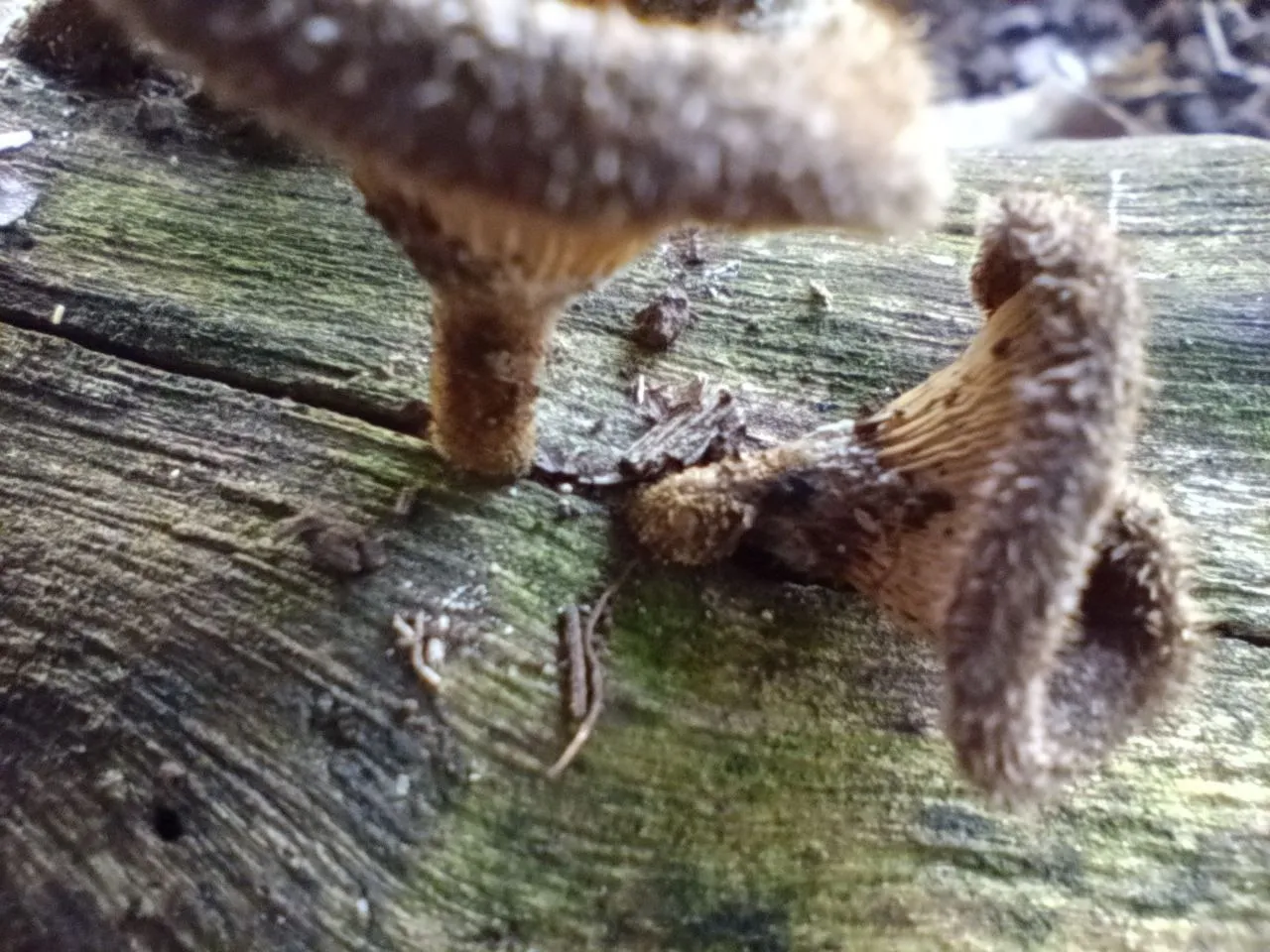
For example, Tipularia orchids rely on solely one specific fungus from the Protomerulius genus, in their youth; once they have begun to sprout leaves however, they hook up with any of a number of fungi from the genus Tulasnella.
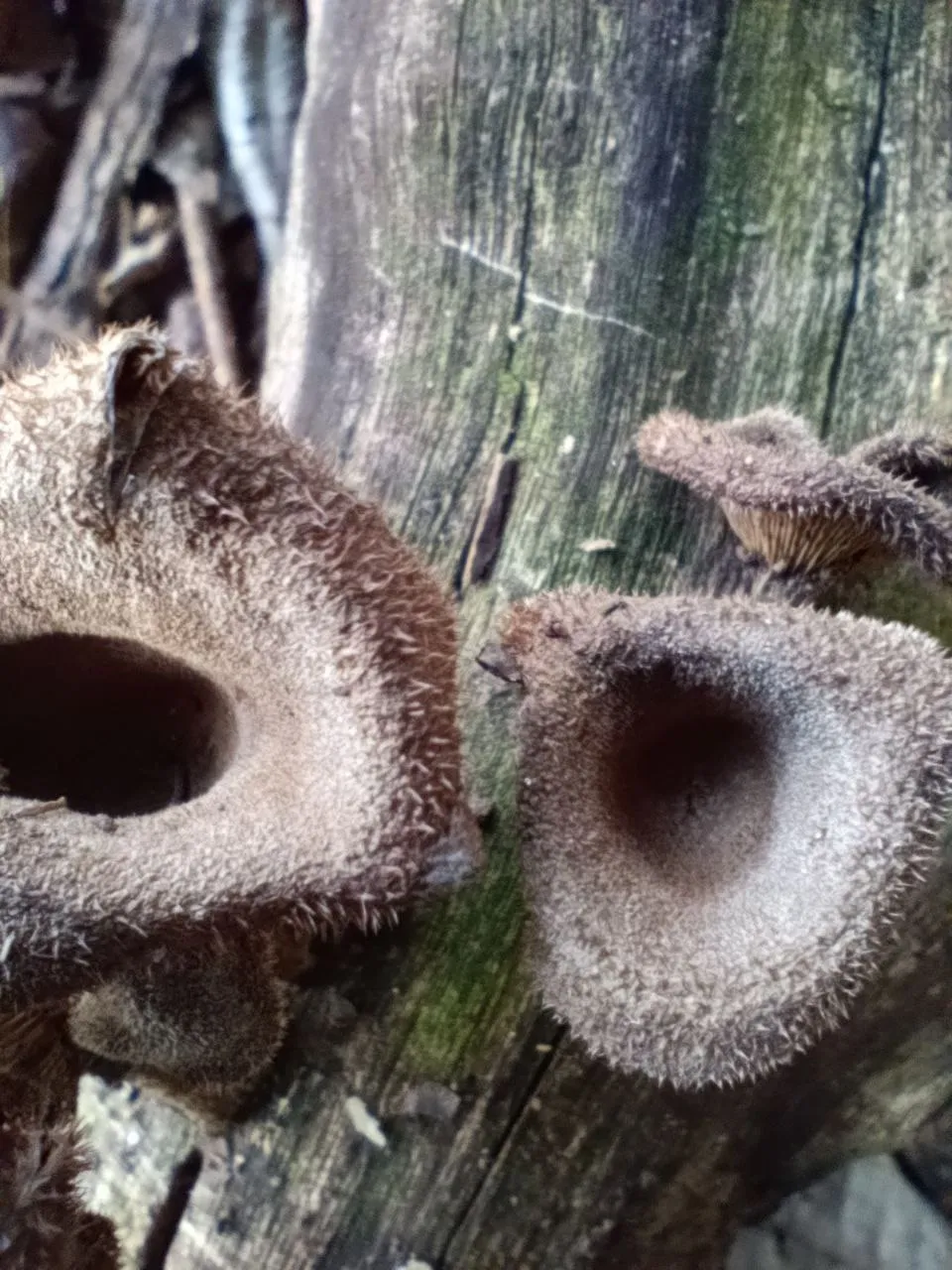
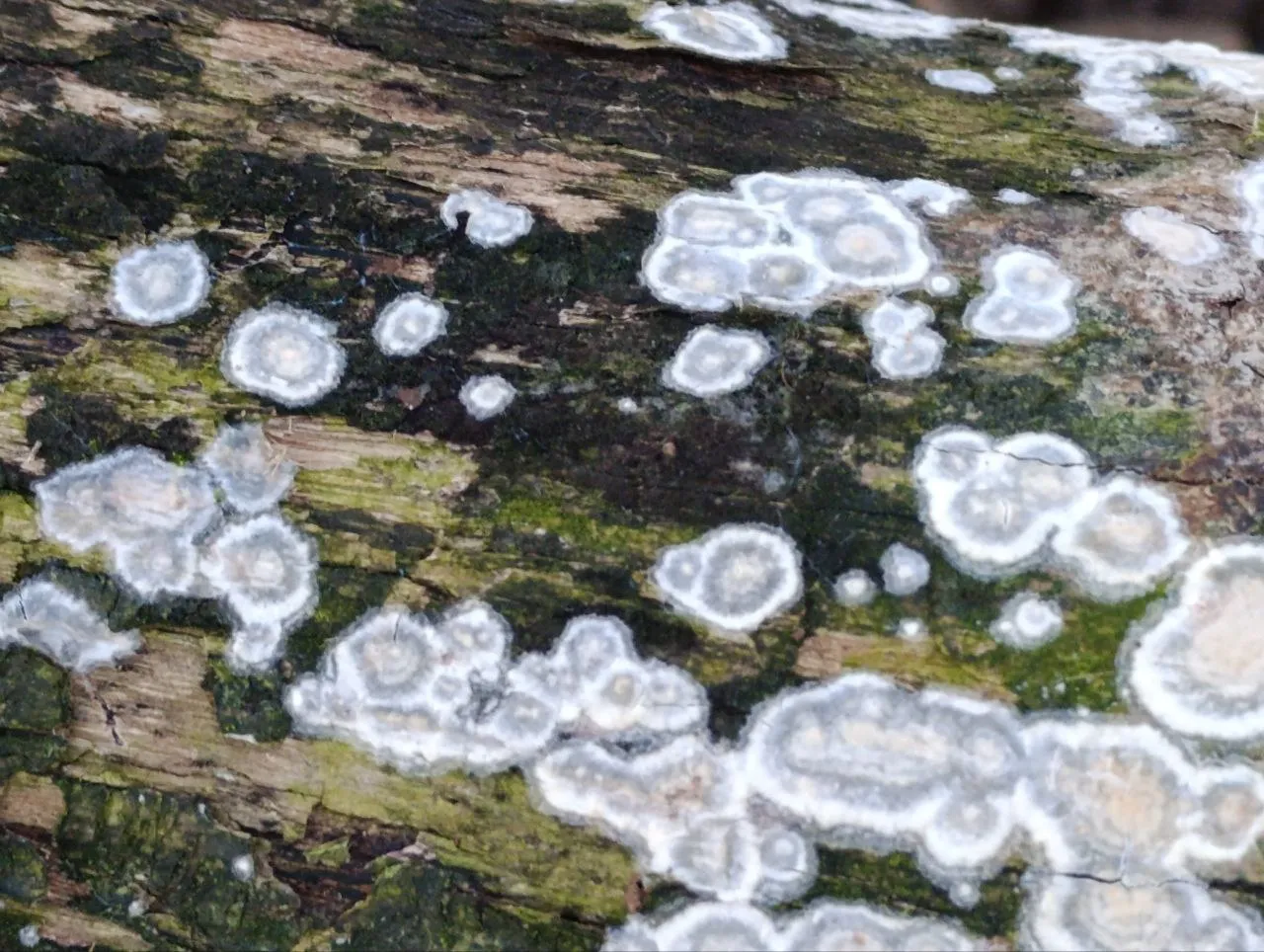
Maybe you've noticed that I also got to check in with my Slime-mold friend who also is carrying on and on and on in spite of the cold.
If you would like to, you can see her history here and here
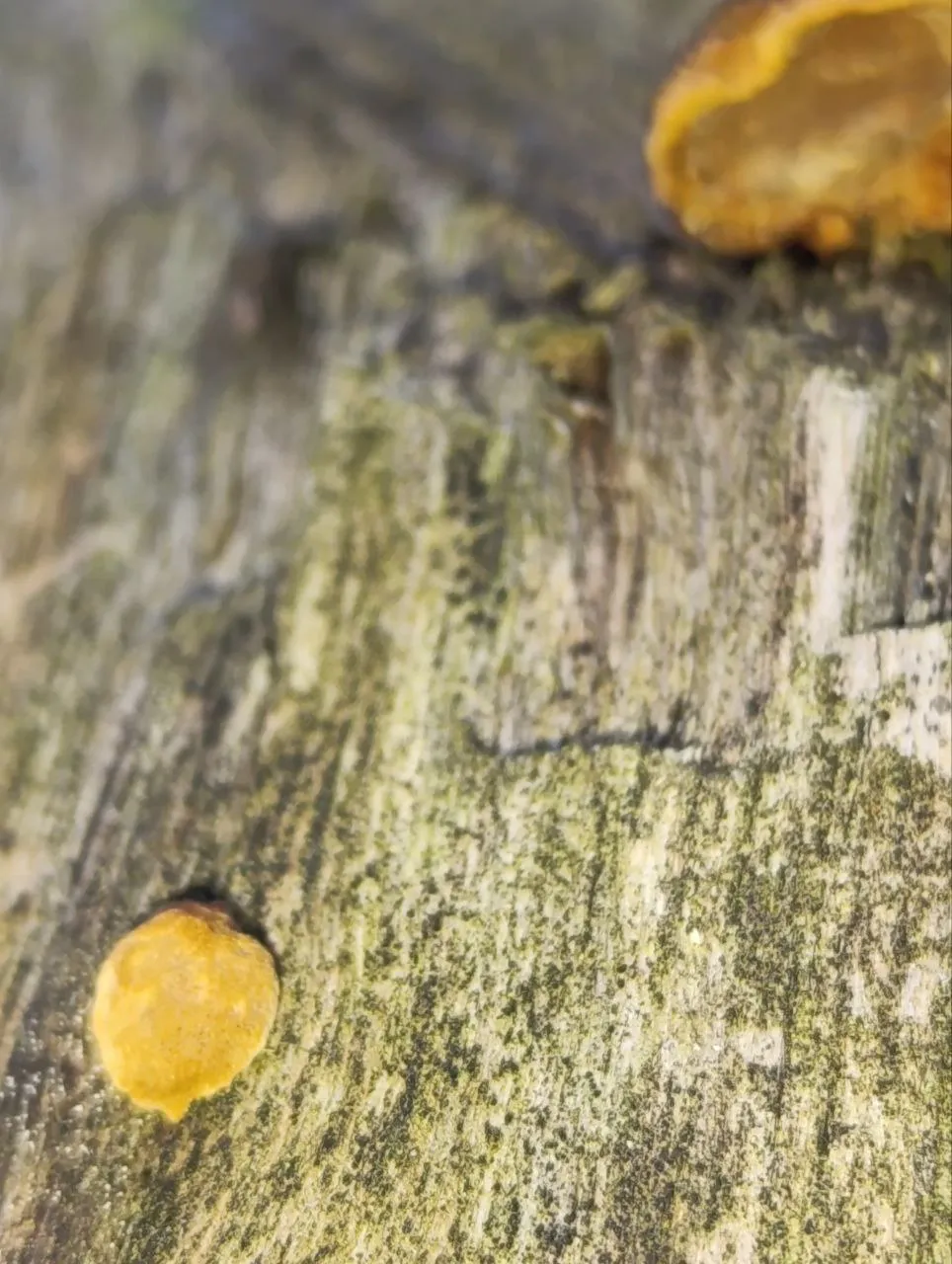
Orchids are not fungi MELI, and neither are slime molds!
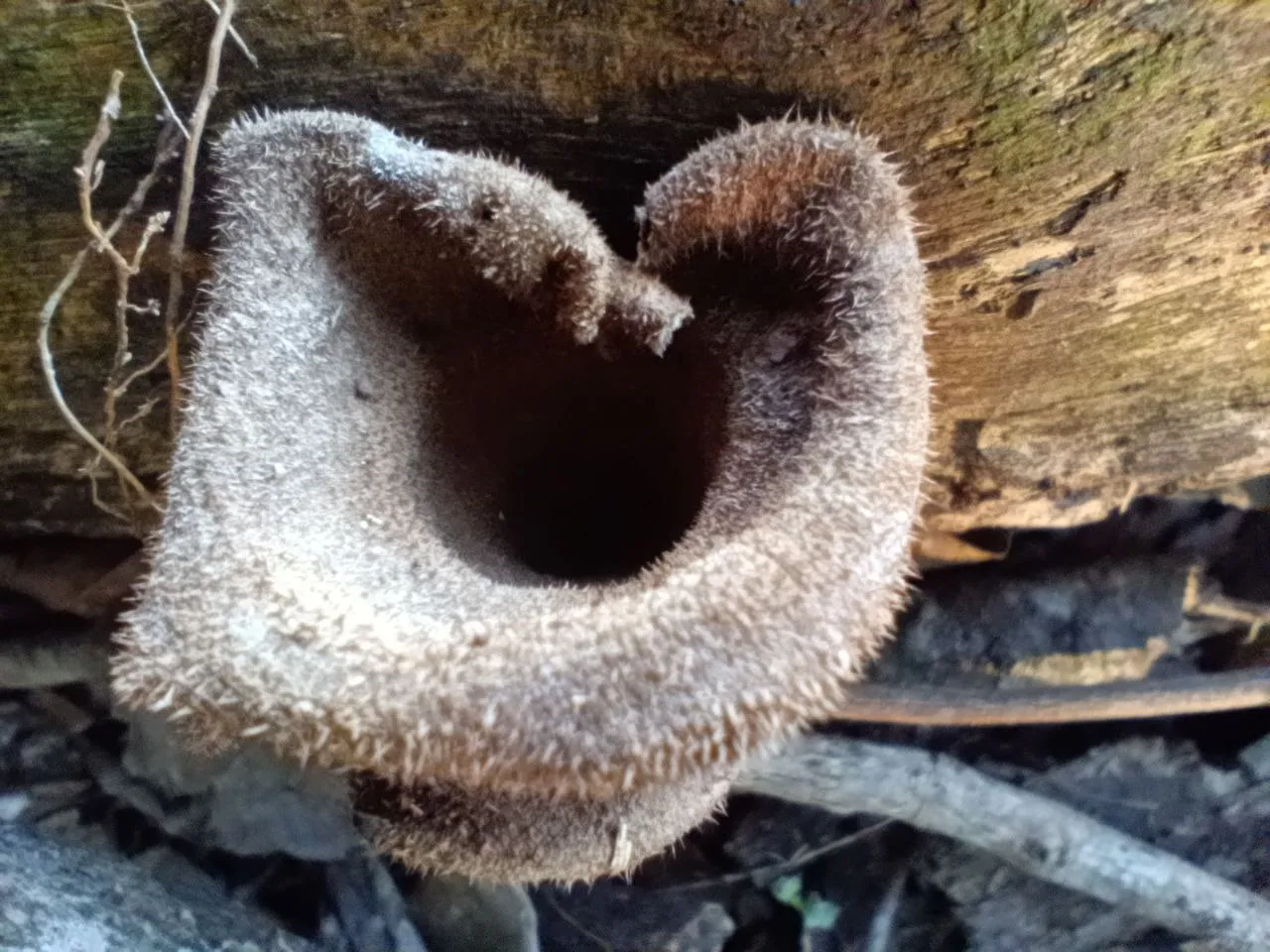
ANARCHY!

I will leave you with the rest of the photographs to enjoy and say no more.
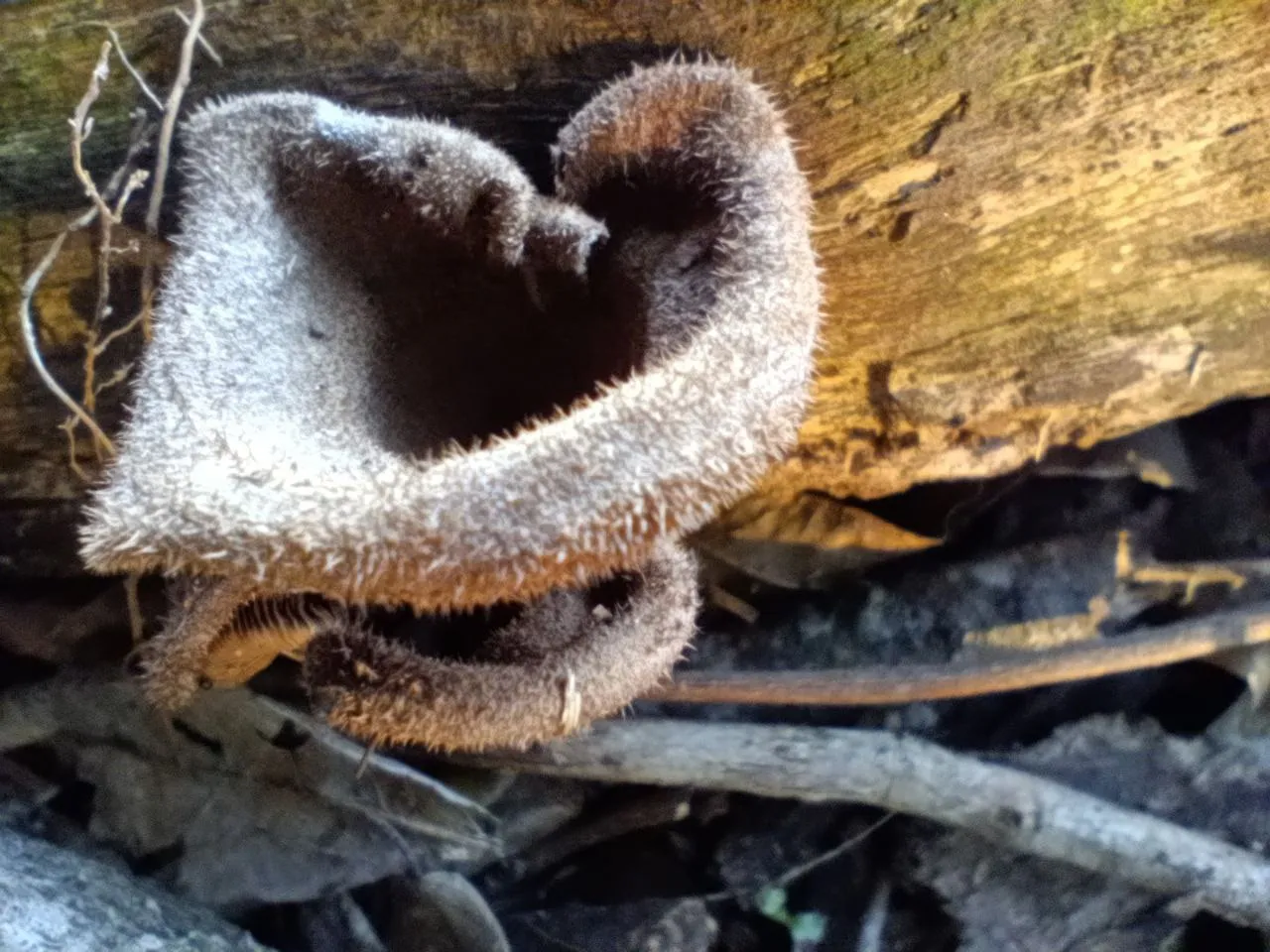

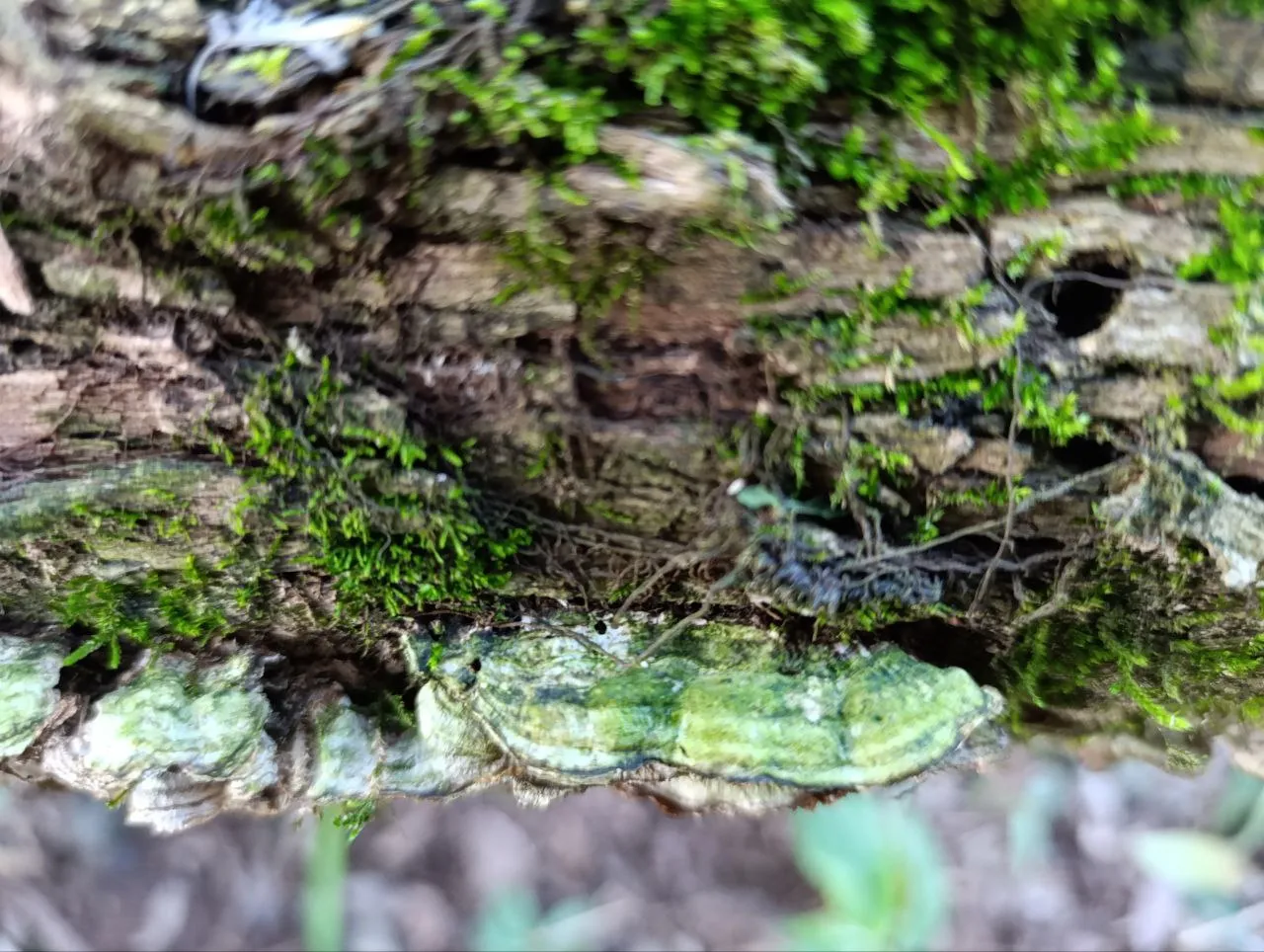
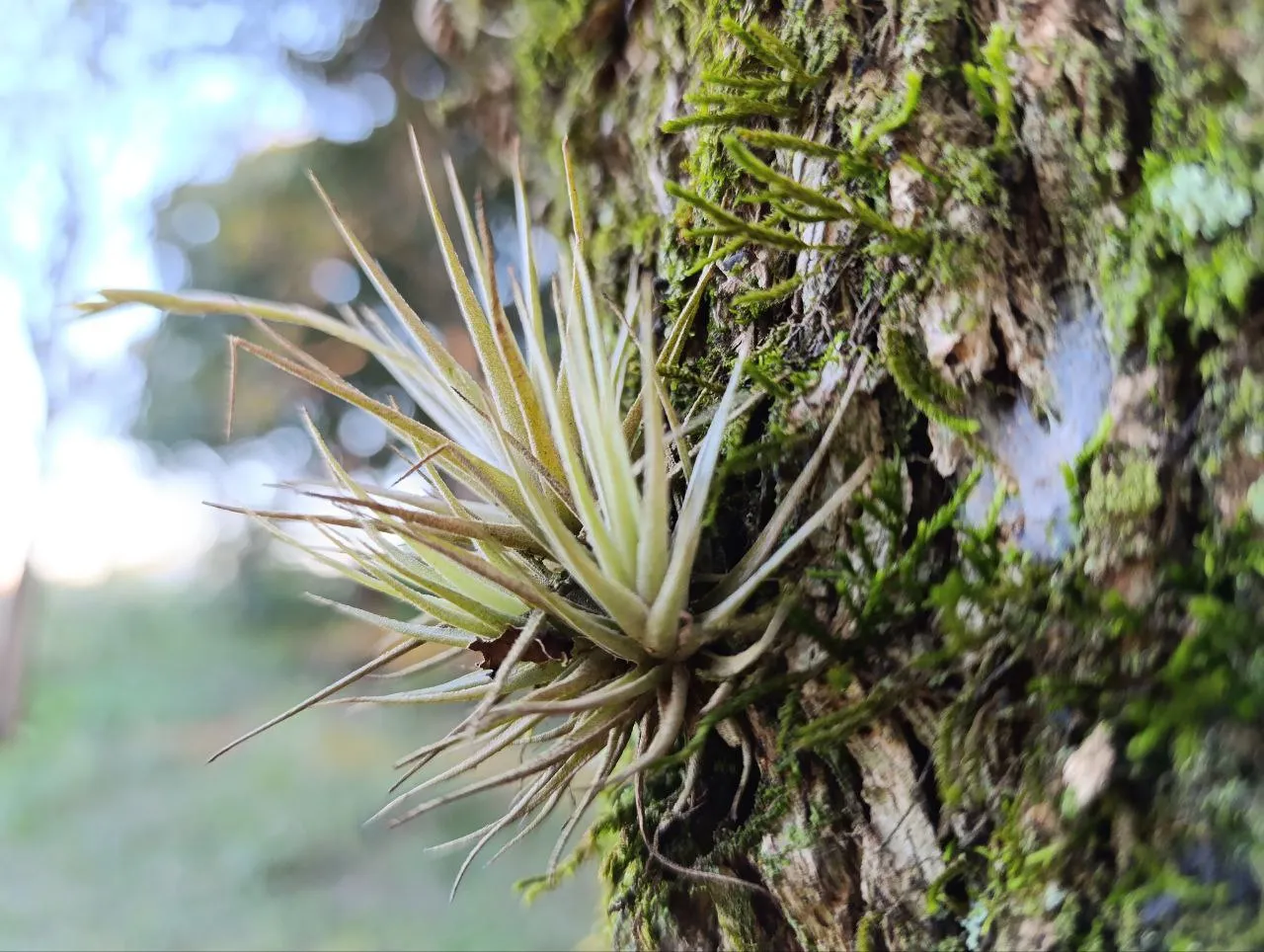
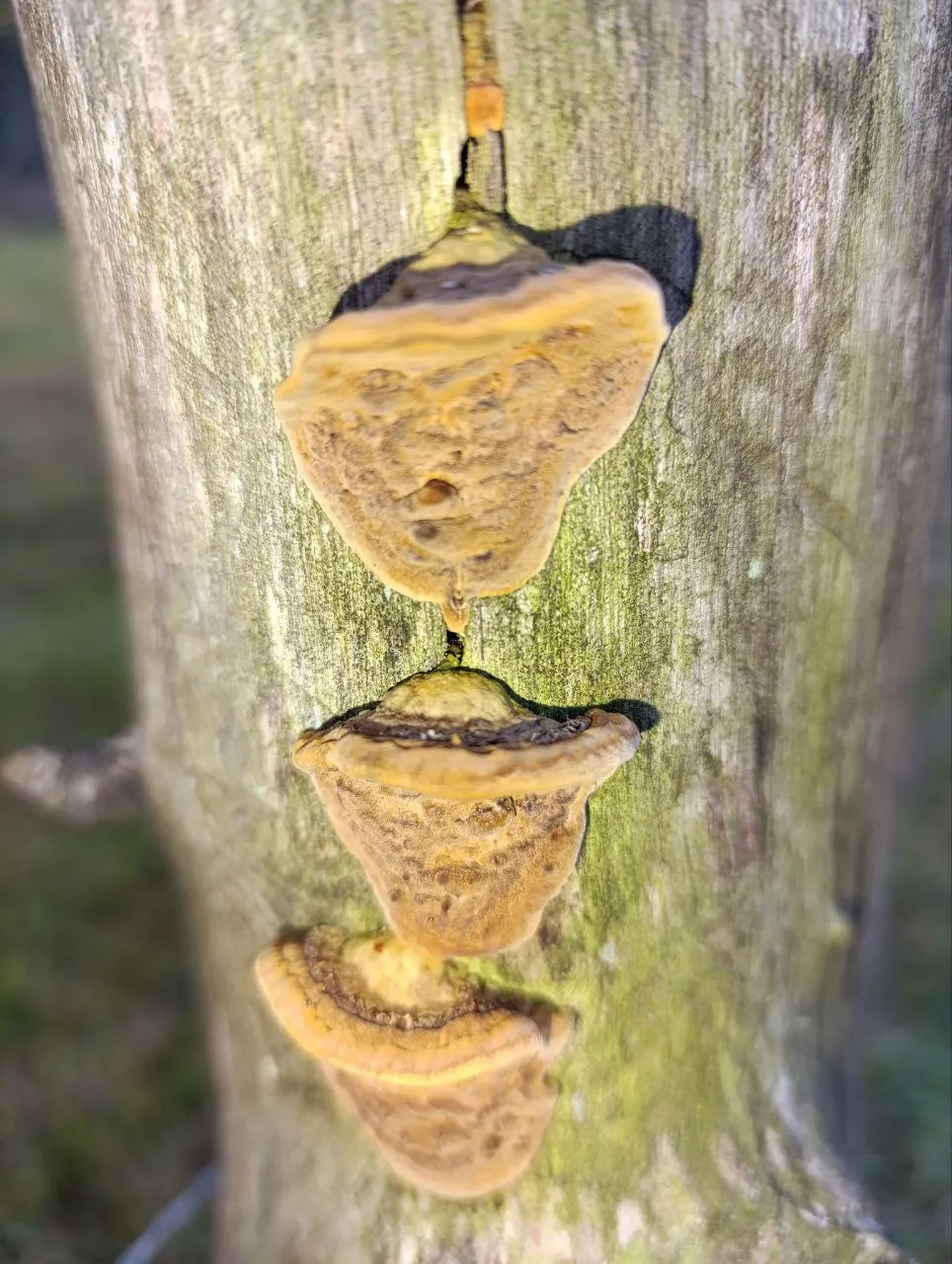
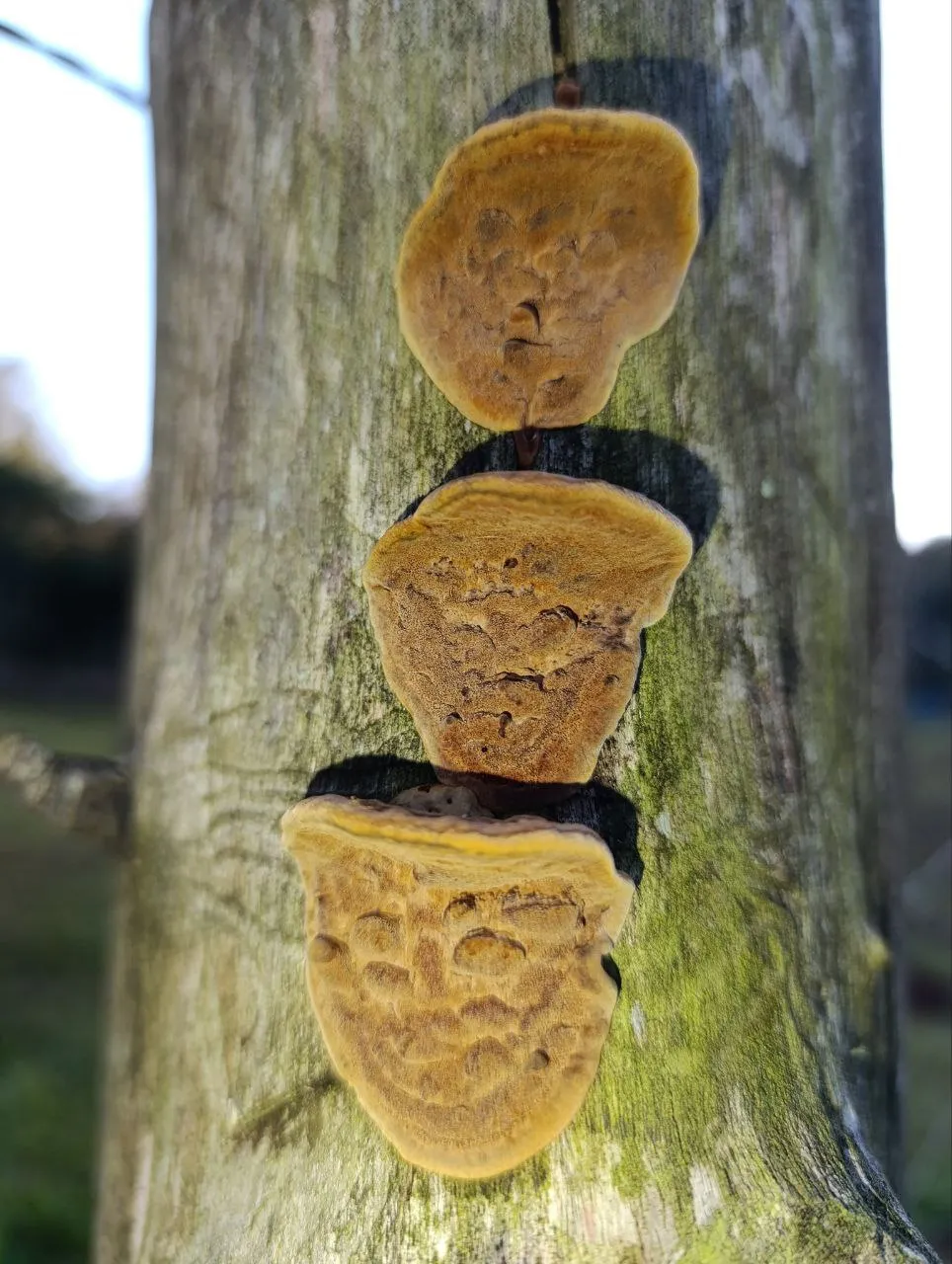
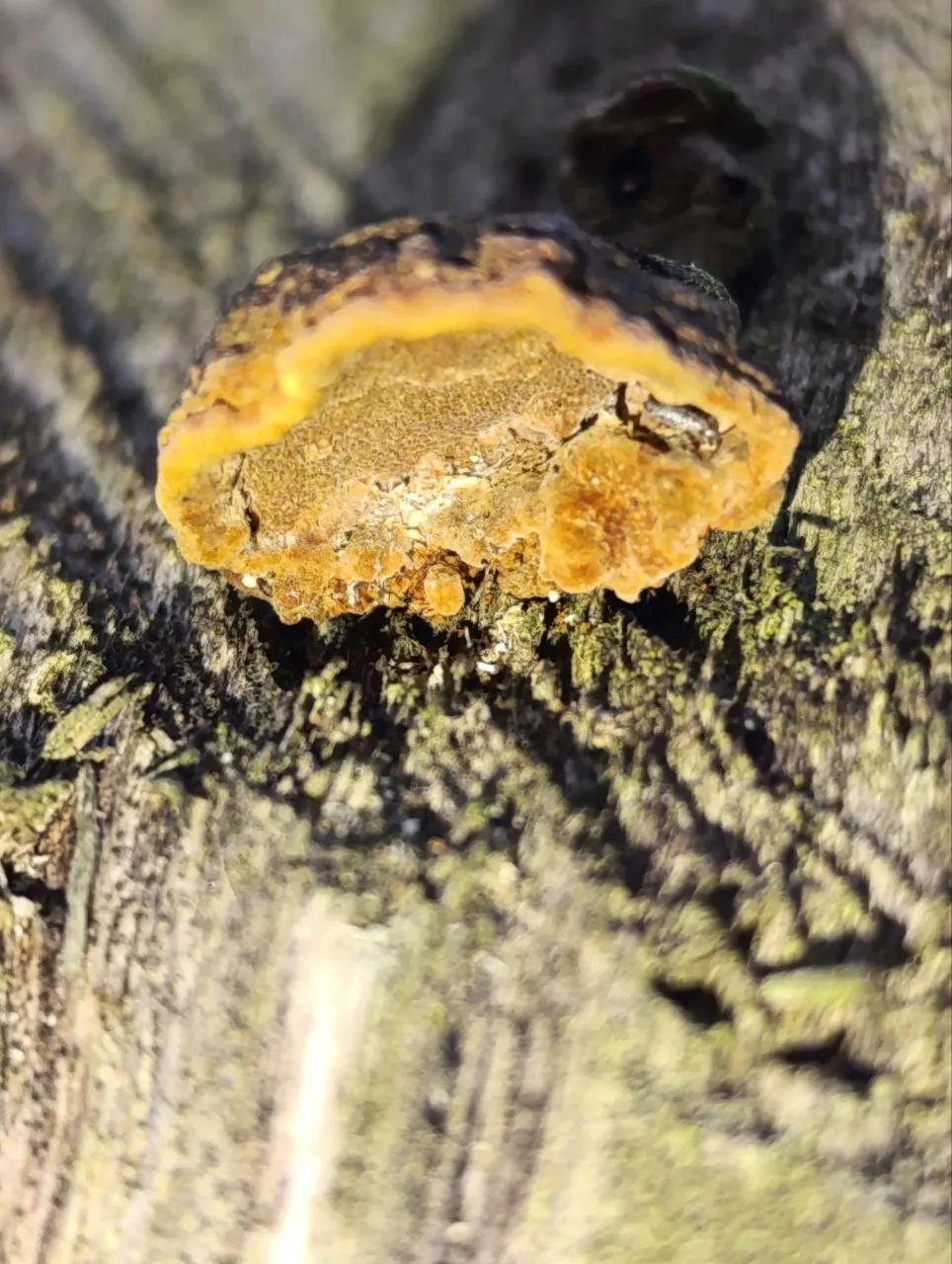
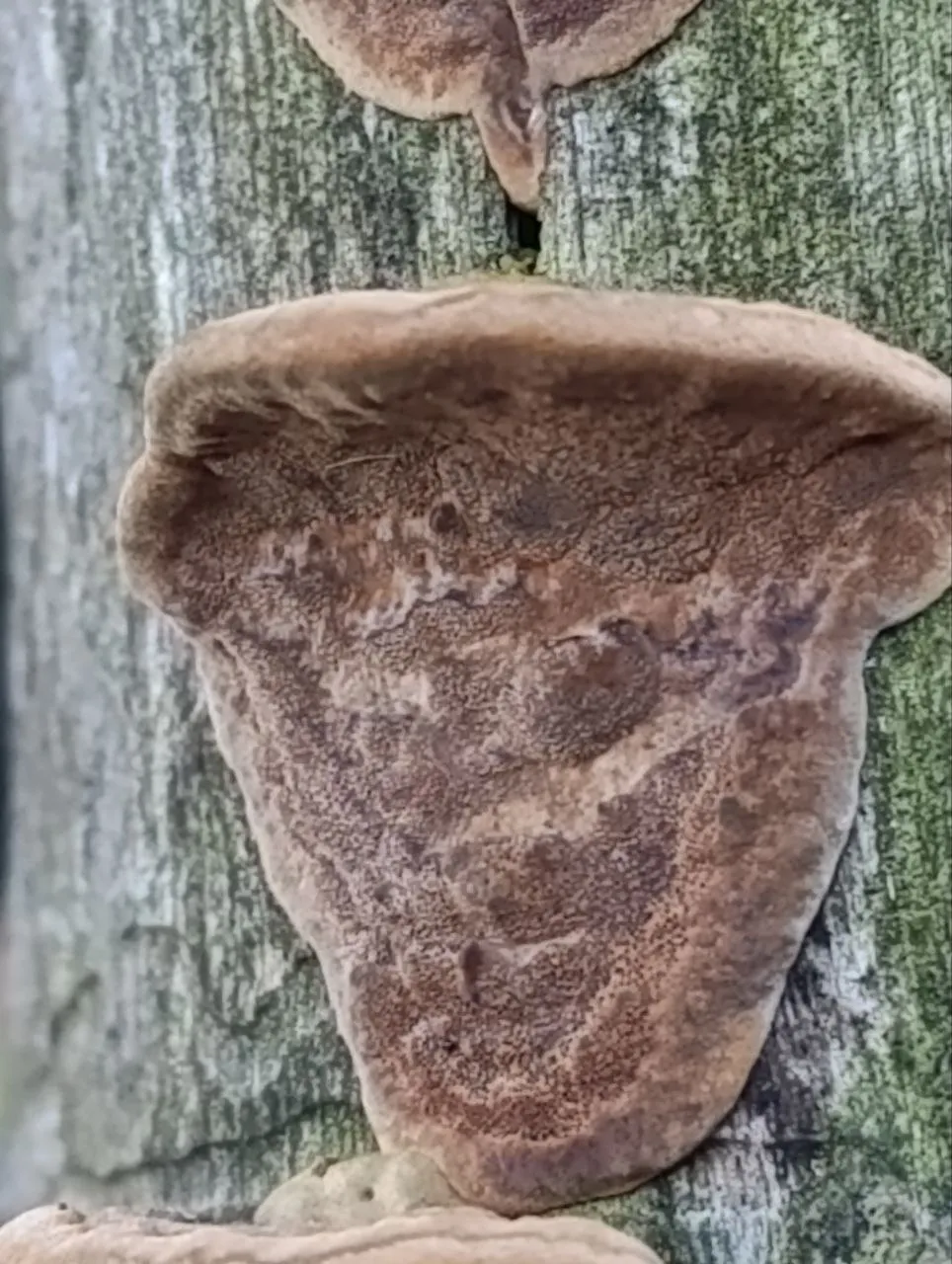
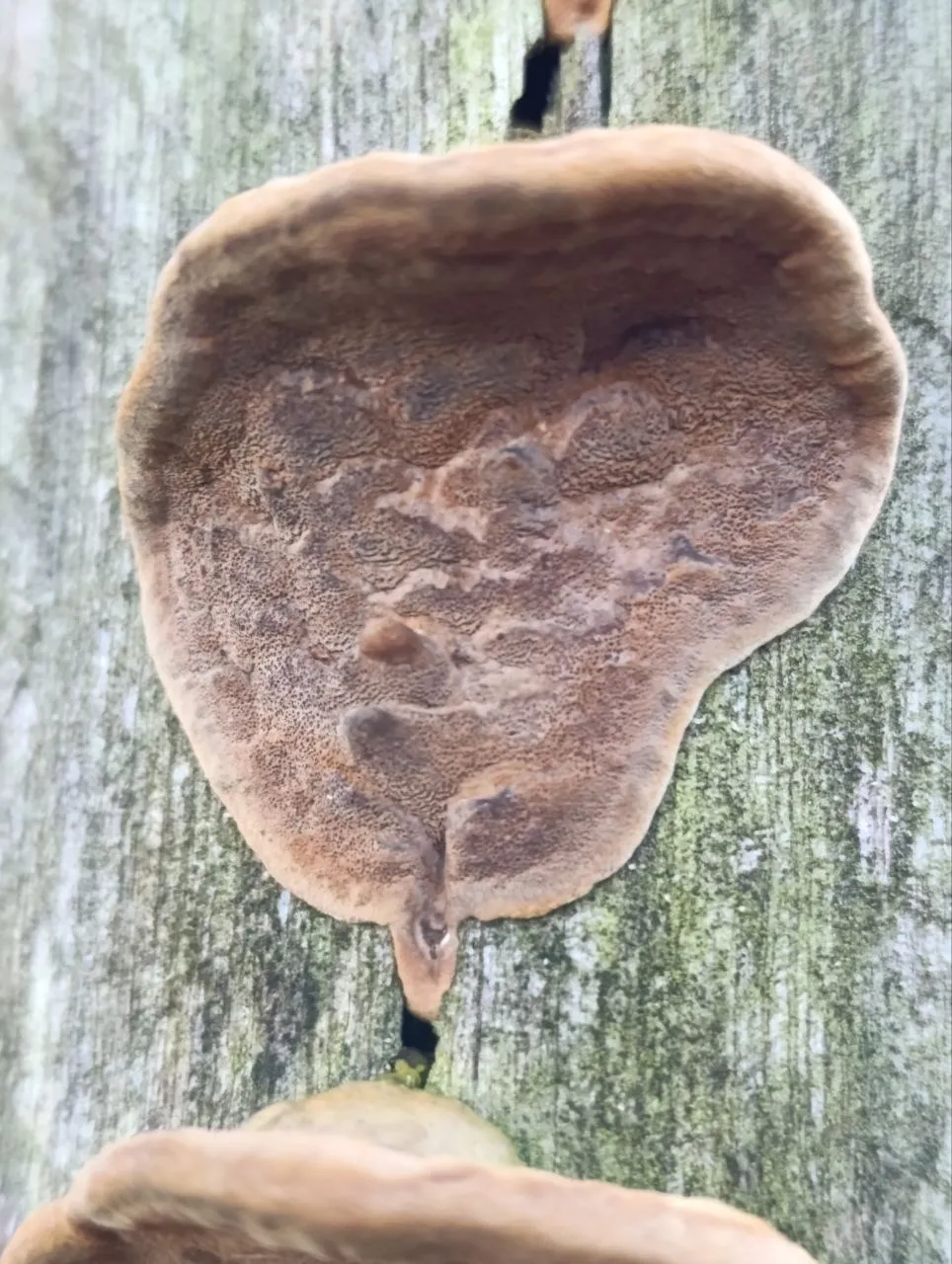
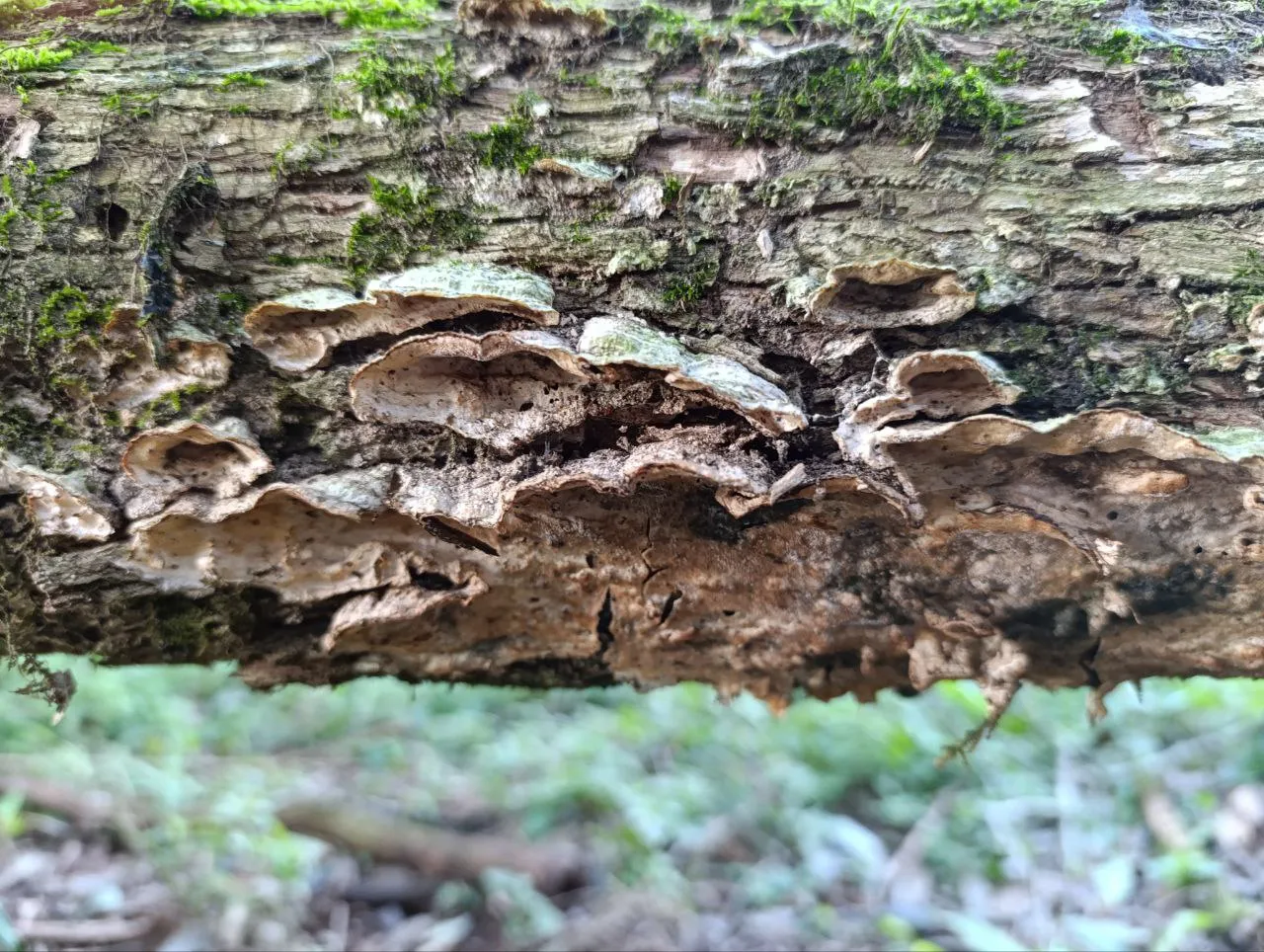
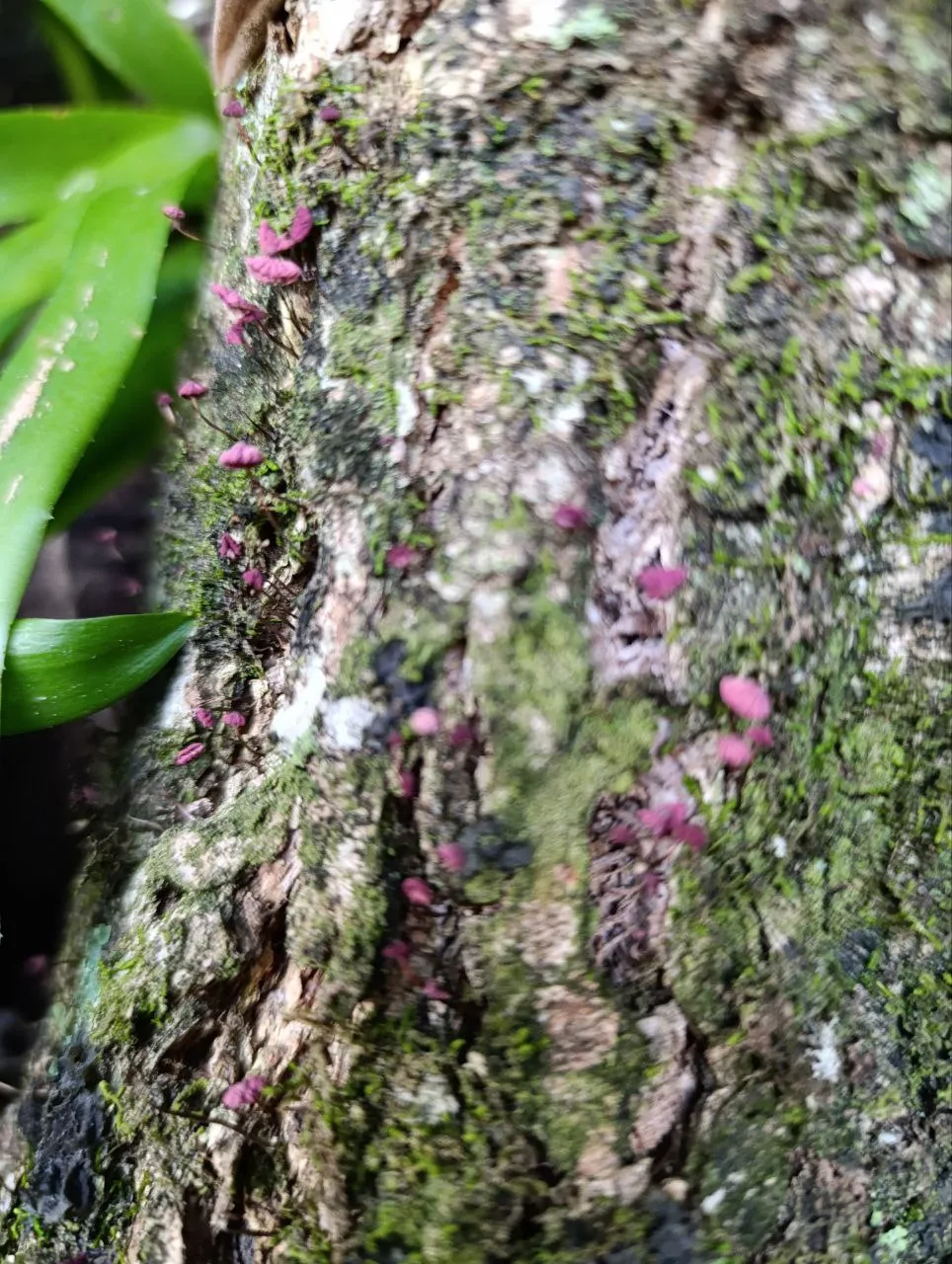
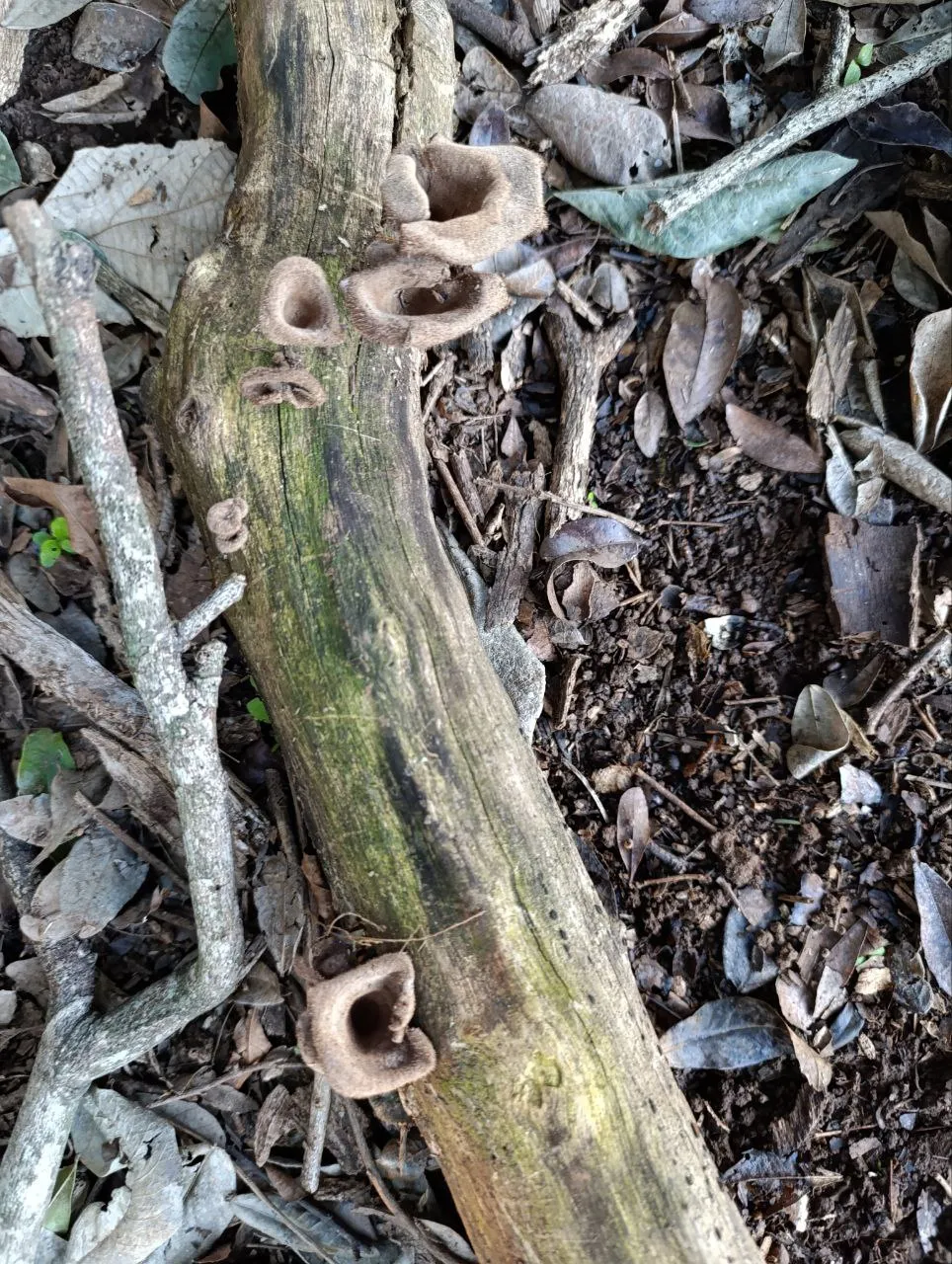
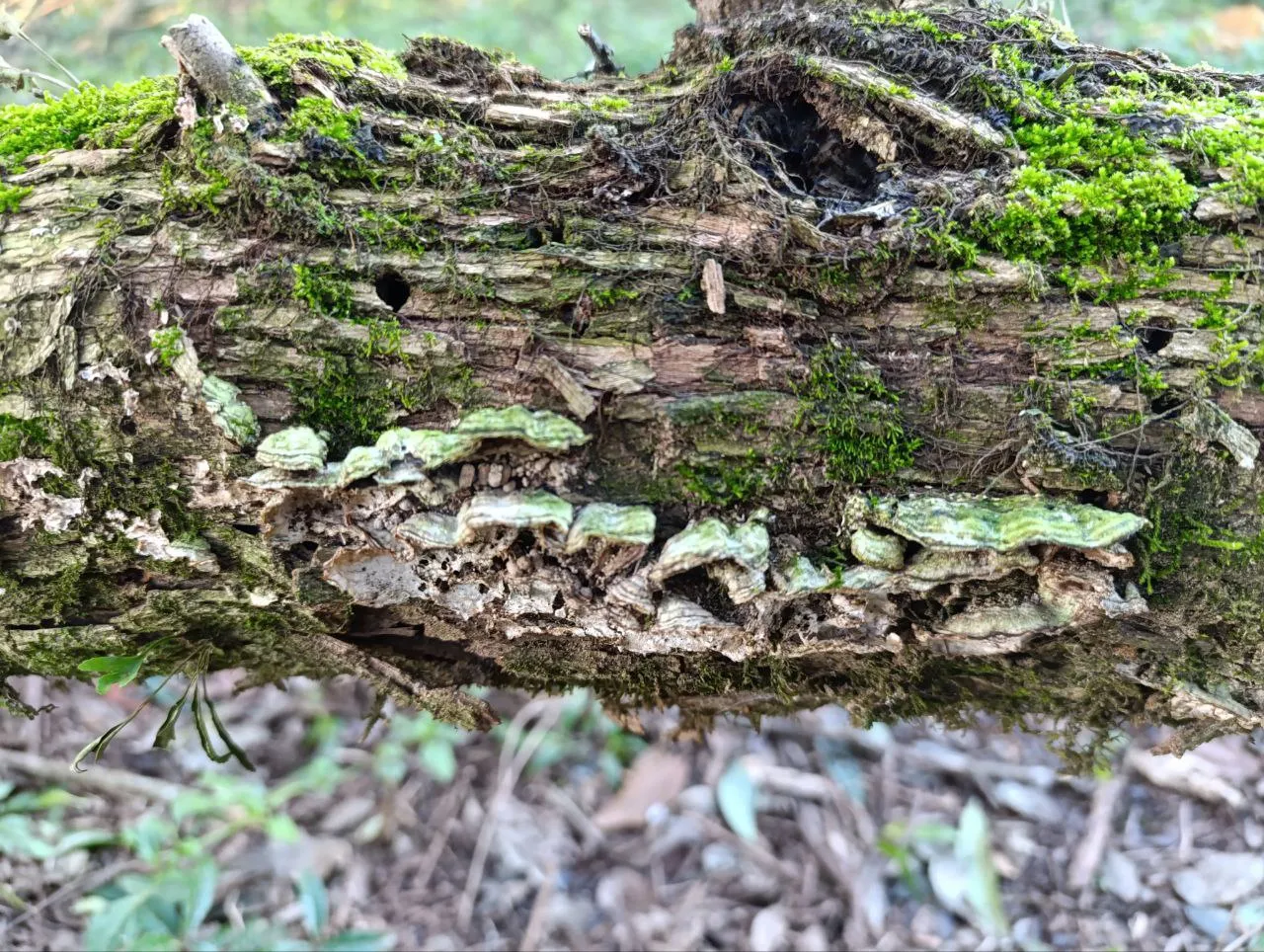
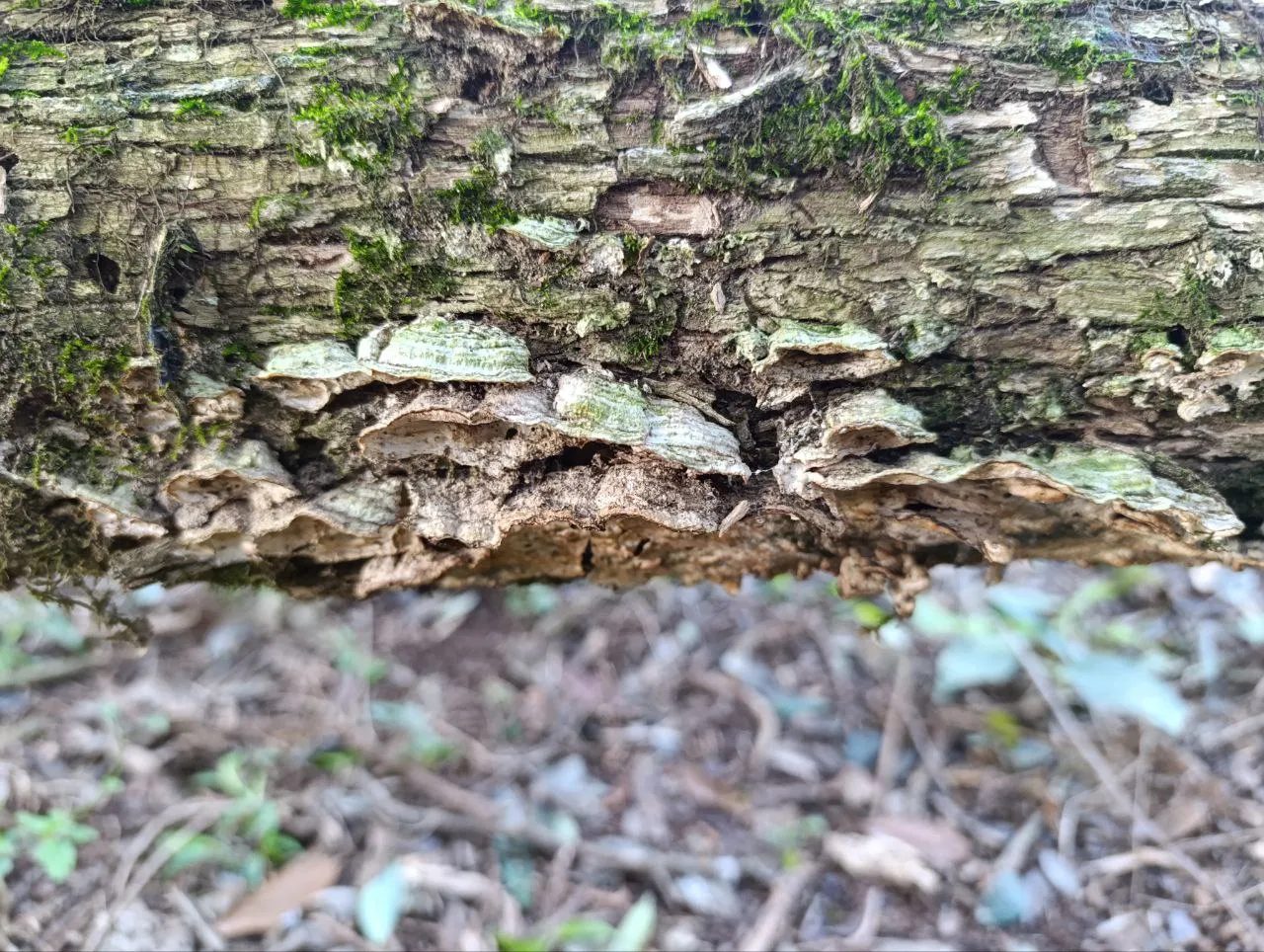
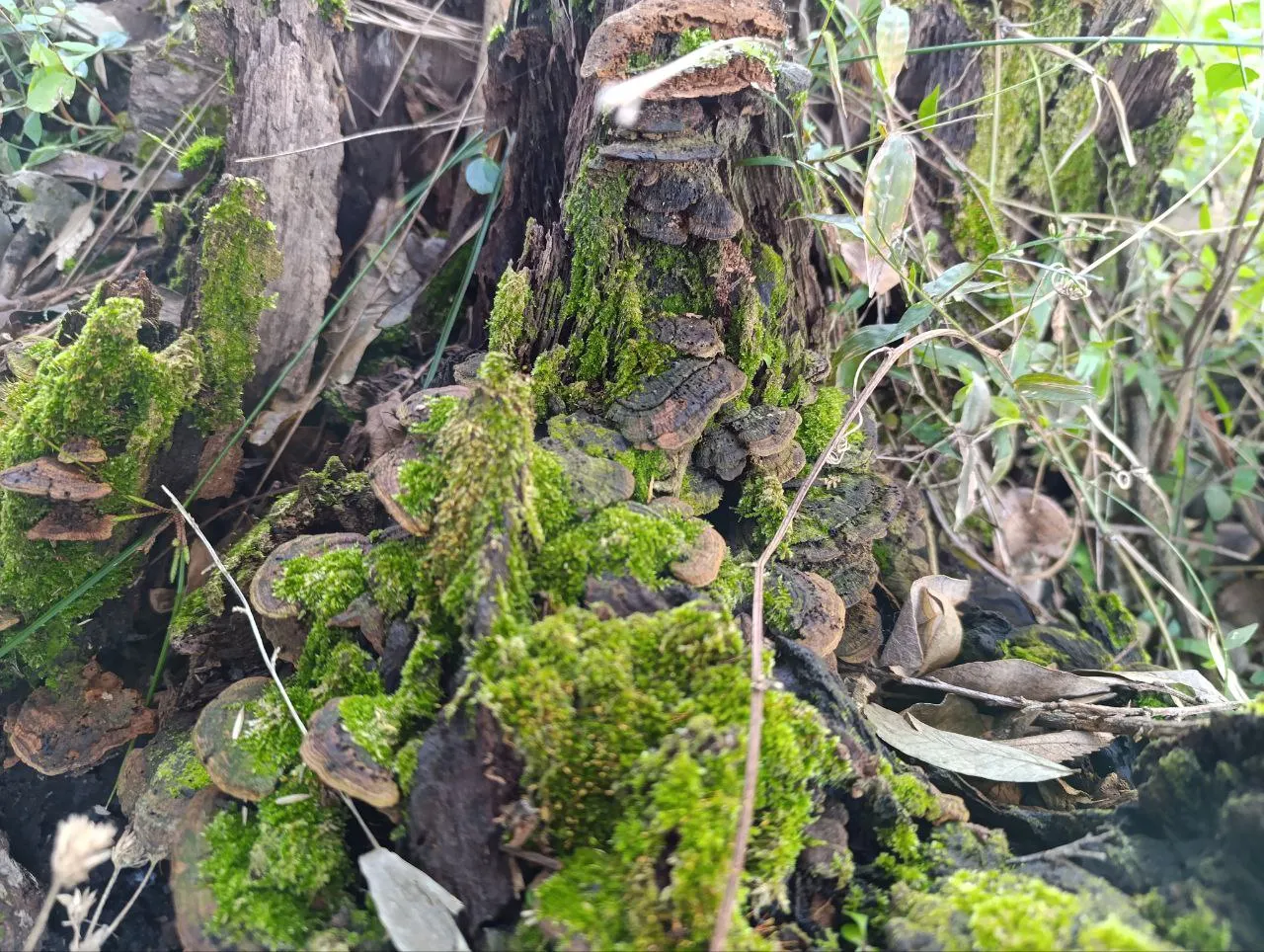
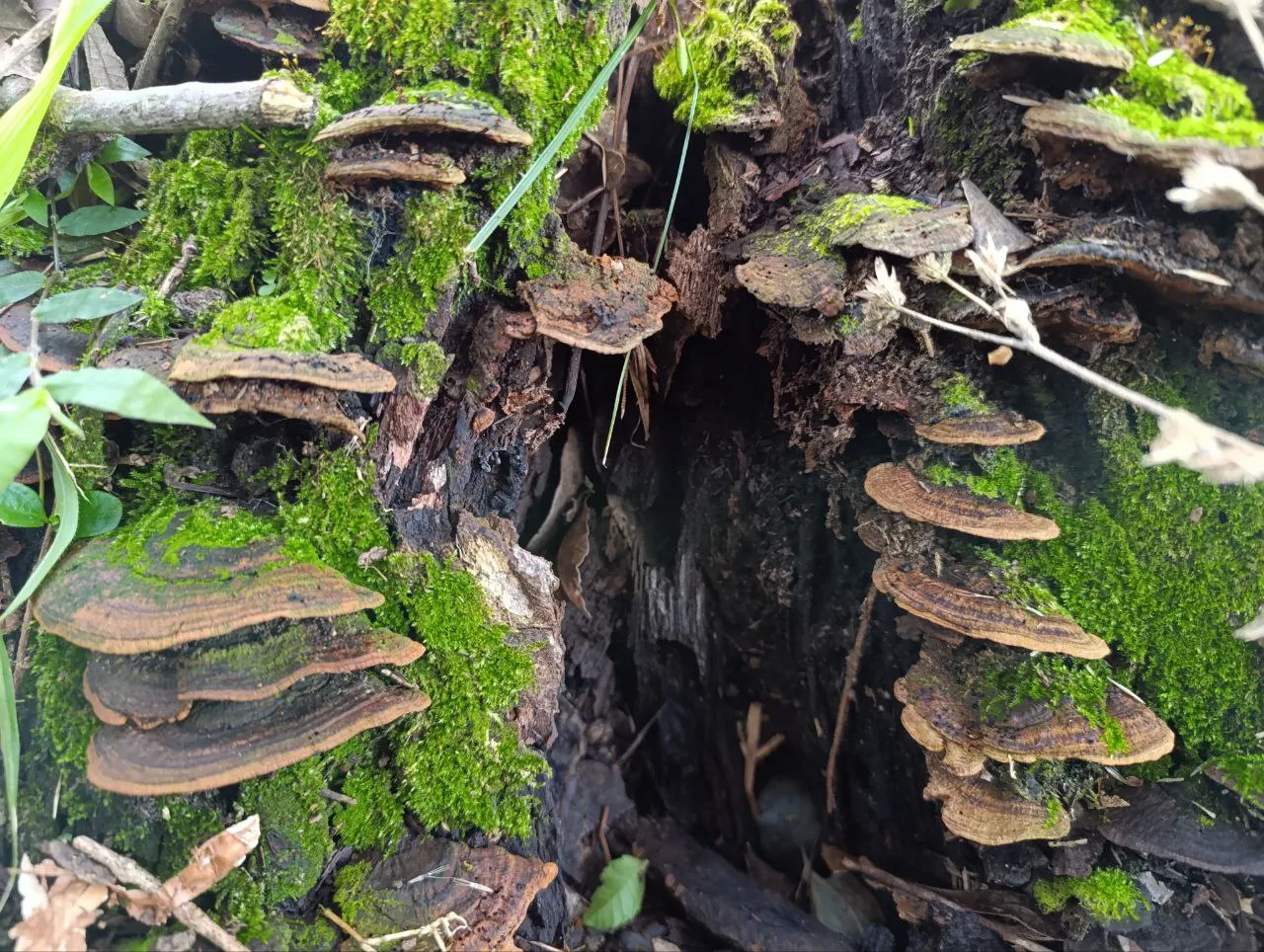
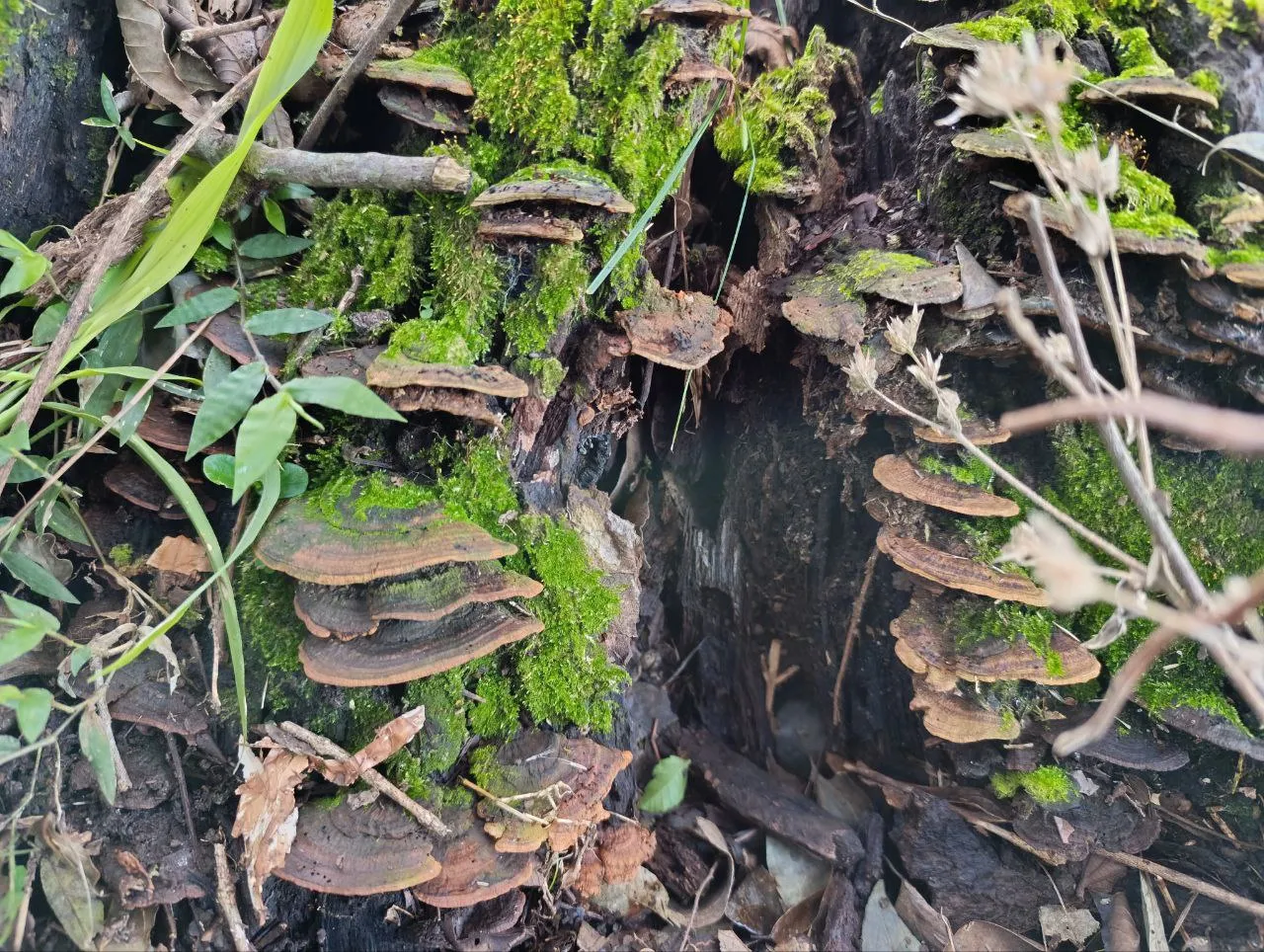

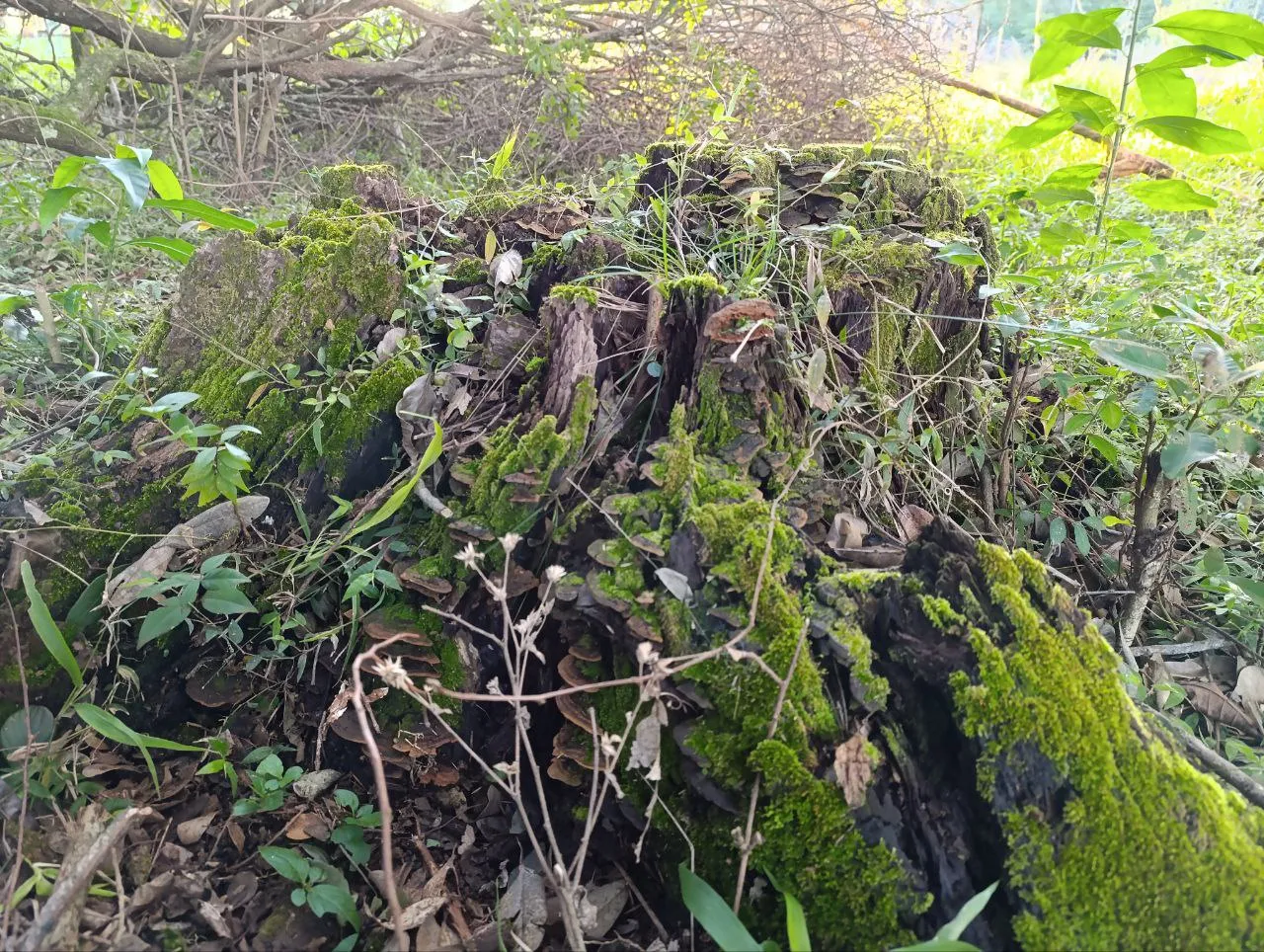
En español:
A pesar del frío invierno, hoy tuve la oportunidad de fotografiar varios hongos hermosos en el bosquecito.
![photo_2025-07-04_16-16-20.jpg] ( )
)
También vi una gran cantidad de orquídeas. Curiosamente, muchas de ellas parecían haber brotado recientemente en otoño, diminutas.
![foto_2025-07-04_16-16-11.jpg] ( )
)
Todo esto me hizo pensar en la relación entre los hongos y las orquídeas, sobre la que tenía intención de escribir aquí para ustedes.
![photo_2025-07-04_16-16-22.jpg] ( )
)
Comparto con vosotros dos aspectos fundamentales de mi filosofía espiritual y mi visión del mundo.
![photo_2025-07-04_16-16-14.jpg] ( )
)
La primera es que el efecto placebo es la explicación de casi todo lo psicoespiritual en lo que respecta a los seres humanos y, potencialmente, también a muchos animales. Piensa en cómo responden los caballos al trabajo energético. Te lo puedo contar de primera mano... y eso será tema de otra publicación algún día. Recuérdamelo.
![photo_2025-07-04_16-15-53.jpg] ( )
)
¿Es el «efecto placebo», es la «fe» o es el «amor»?
También revisé el poste de la cerca y la Dacryopinax Spathularia de un artículo anterior. También están brotando de nuevo, incluso con este frío.
![photo_2025-07-04_16-15-59.jpg] ( )
)
Entonces solo diré: «La supervivencia de la cooperativa». Ese es el otro precepto espiritual.
![foto_2025-07-04_16-16-24.jpg] ( )
)
Por eso, las simbiosis y la noción de simbiogénesis me intrigan sin fin.
![photo_2025-07-04_16-16-31.jpg] ( )
)
Los hongos micorrízicos que viven en las raíces de las plantas reciben carbono, azúcares y carbohidratos de estas. A cambio, los hongos ayudan a las plantas a acceder al agua y los nutrientes del suelo. Por lo general, mantienen una relación simbiótica clara y sencilla.
![photo_2025-07-04_16-16-12.jpg] ( )
)
¡Entiéndelo! Muchos de los hongos que viven en pelotones, a menudo vistos como densas espirales de hongos, dentro de la rizosfera (el mundo de las raíces) de los protocormos (bolas con raíces) de las orquídeas, proporcionan nitrógeno, carbono y otros nutrientes esenciales a la planta, y aparentemente no obtienen nada a cambio.
![photo_2025-07-04_16-16-36.jpg] ( )
)
La mayoría de las semillas de orquídeas son extremadamente pequeñas y carecen de endospermo con nutrientes almacenados, por lo que no pueden germinar sin la ayuda de hongos que las nutran.
![photo_2025-07-04_16-15-51.jpg] ( )
)
Mientras que muchas orquídeas acaban brotando hojas y se vuelven fotosintéticas, otras, que son micoheterotróficas, dependen toda su vida de su socio fúngico y nunca desarrollan hojas.
![photo_2025-07-04_16-17-03.jpg] ( )
)
A menudo, solo un hongo específico puede relacionarse de esta manera con un tipo específico de orquídea.
![foto_2025-07-04_16-17-05.jpg] ( )
)
Muchos de los tipos de hongos que se asocian con las orquídeas son • Basidiomicetos (tienen fábricas de esporas en forma de maza). Algunos son especies de los géneros Sebacina, Ceratobasidium, como Rhizoctonia, y Tulasnella.
! photo_2025-07-04_16-17-06.jpg
Las orquídeas son realmente maravillosas como bioindicadores de la salud de un ecosistema, no solo por su relación con hongos específicos. Ilustran cómo ninguna especie, ninguna familia, ningún género y, por supuesto, ningún individuo es monolítico, porque aunque los científicos de laboratorio han logrado germinar con éxito semillas de orquídeas provistas de sus hongos en placas de Petri, la mayoría de las orquídeas terrestres
Links/ Sources:
Orchids Are Doing Something Totally Weird With Fungi
Me encantan las críticas constructivas. Me ayuda a crecer. Con autenticidad. Por favor, critica mi escritura, fotografía, etcétera. Los comentarios que me parezcan que mejoran mi experiencia en Hive y que considere que pueden ser beneficiosos para otros, por ejemplo para iniciar una conversación, y los comentarios que me inspiren a mí o a otros a profundizar en otras ideas o temas, etcétera, recibirán votos positivos.
I love constructive criticism. It helps me grow. Authentically. Please do critique my wrtiting, photography, etcetera. Comments which I find ameliorate my experience on Hive and consider to be potentially beneficial to others, conversation starting for example and comments that inspire me or others to delve into other ideas or subjects etcetera...will be upvoted.
I write what you read here and I make the fotos and videos with a redmi note 13 pro
DeepL is my preferred traductor for translating my writing from spanish to english and/or english to spanish.
3 cheers and 3 hugs and 3 kisses for @ewkaw
Besos y abrazos.
Lots of love. thanks for journeying with me